




Choose NY’s #1 dental liability insurance provider.
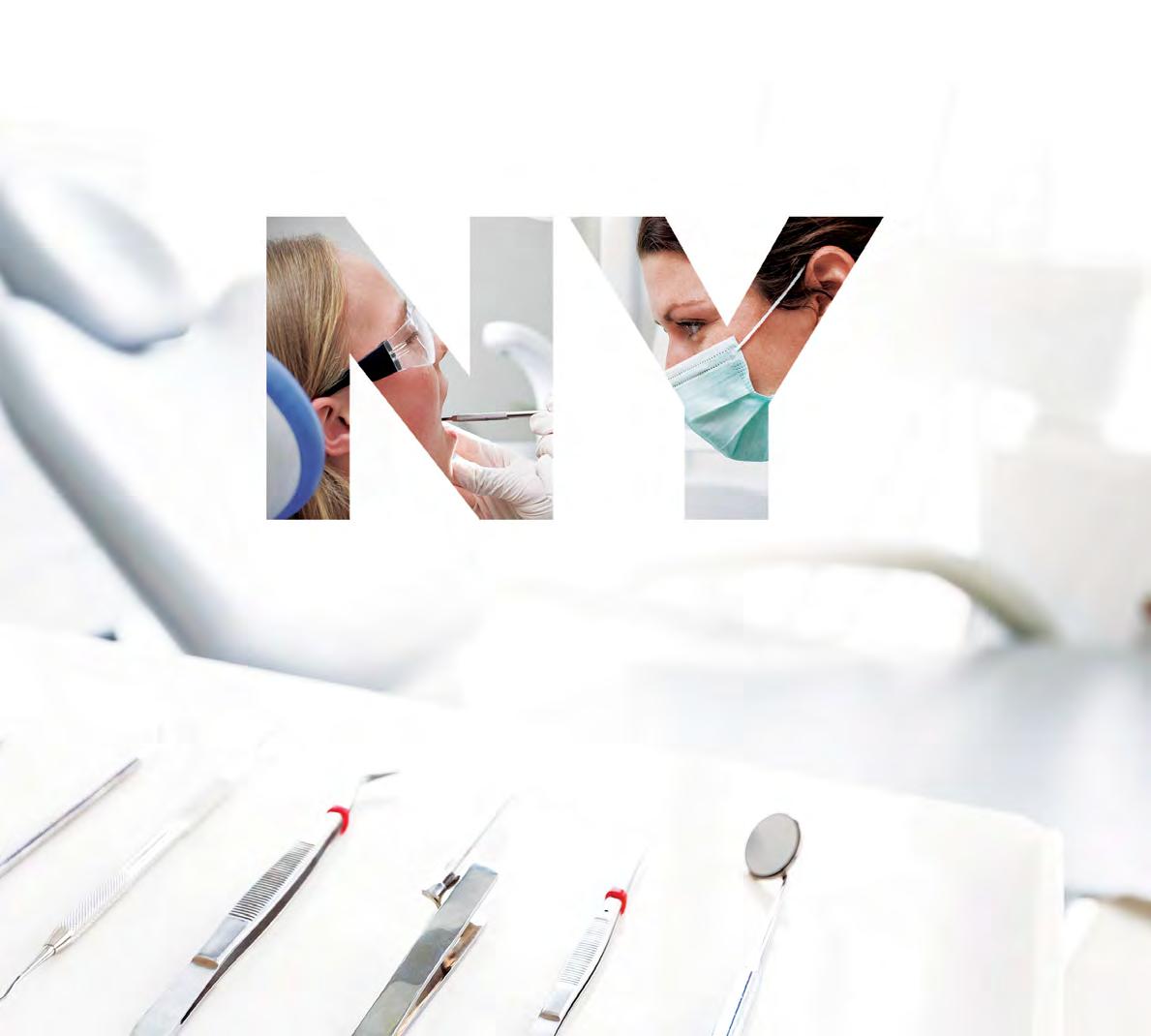
localized risk management guidance, claims protection, and underwriting support. Our policyholders enjoy benefits and expertise not found anywhere else — supported by concierge-level service every step of the way.
For dental malpractice insurance in New York, nothing compares to MLMIC.
The NYSDA-MLMIC program provides New York dentists from Buffalo to the Bronx with localized risk management guidance, claims protection, and underwriting support. Our policyholders enjoy benefits and expertise not found anywhere else — supported by concierge-level service every step of the way.
Learn more at MLMIC.com/dental Or, call (888) 392-0638
For dental malpractice insurance in New York, nothing compares to MLMIC.
Learn more at MLMIC.com/NYdental Or, call (888) 392-0638
The New York State Dental Journal is a peer reviewed publication. Opinions expressed by the authors of material included in The New York State Dental Journal do not necessarily represent the policies of the New York State Dental Association or The New York State Dental Journal. EZ-Flip version of The NYSDJ is available at www. nysdental.org and can be downloaded to mobile devices.
Debra K. Fischoff, D.M.D., M.S.; Sara Sternbach, D.D.S.; Juliana Gomez, D.D.S.; Sonal S. Shah, D.D.S.
A retrospective study of lichenoid diagnoses at NYU College of Dentistry pointed to strong association between disease and certain medications, in particular, antihypertensives and antihyperlipidemics.

Brendan Dowd, D.D.S.; Betsy Bray, R.D.H., B.S. NYSDA-sponsored Dental Demonstration Project is evaluated at five-year mark to determine how events and follow-up intervention influenced dental home status of patients who attended. Results are encouraging but point to need for future growth.
Andrew T. Moshman, D.M.D., Gwen Cohen-Brown, D.D.S. Amelogenesis imperfecta, group of genetic conditions affecting thickness, microstructure and degree of mineralization, is examined in light of its connection to other serious medical conditions. Importance of correct diagnosis and monitoring are emphasized. Case series and review of literature
Enforceable cost-control mechanisms can fix skyrocketing student loan debt.
Current policies and legislation treat only the symptoms of soaring dental student loan debt: delayed interest accrual; deferred payments; reduced loan origination fees; refinancing options; interest and principal tax deductions; income-based repay ment with debt cancellation. These are all palliative measures that, although helpful, fail to address the root causes of the crisis: misplaced incentives and failed accountability.
Incorrect assumptions within the student loan program obscure these underlying problems and, thus, inhibit effective reform. A managed loan model, that is, managed care concepts applied to a financial aid system, will expose false premises and implement market mechanisms that incentivize and hold dental schools, students and the govern ment accountable to control education costs, limit borrowing and maximize loan repayment.
Four false premises operate in the dental student loan process.
• First false premise: Reduced state funding, combined with inflationary increases in oper ating expenses, fully justify the annual escala tions in dental school tuition and fees. Data, however, indicate that, for many schools, the amount of tuition increases far outweighed the total amount of lost funding and in creased expenses.
In 2019, the average total cost of a dental school education, including tuition, instruments, instruc tional materials, health services and other fees, stood at approximately $251,000 for state residents and $321,000 for non-residents. These figures rep resented an approximately 100% increase from 2009, which followed a prior 100% increase from 2000-2009. Many analysts blame a significant por tion of these cost increases not on lost funding or inflation, but on school overexpansion and overhir ing targeted to enhance the reach of schools’ repu tations, attract research grants and facilitate faculty promotions.
The existing loan process offers schools no incentive to control costs since the federal govern ment continues to lend students more money to cover the tuition increases. In addition, prospec tive students continue to apply to dental schools at these higher tuitions because, at least for now, they believe their future income will cover their mount ing debt. Under these circumstances, schools face little accountability for financial mismanagement or unjustified tuition increases.
• Second false premise: Schools and loan agen cies publish accurate and complete estimates re garding dental educational costs. In fact, schools knowingly do not inform prospective student borrowers of inevitable cost increases, such as planned 4% to 5% annual tuition hikes, approx imately 7% accruing interest on principal while in school, 3% loan origination fees and infla
tionary increases in living expenses into their predictions. In some cases, the actual costs for tuition, fees and living expenses alone run 28% higher than the overall cost estimates listed online. Intentional cost underestimates falsely mislead students to under take debt load that unexpectedly expands beyond their means. Estimates of average total dental student debt often represent only principal bor rowed. The American Dental Education Association calculated the av erage 2020 dental school graduate debt at $304,824. However, adding missed earning opportunity costs due to a full-time school commitment of $255,000 and accrued interest at 7% to this average individual debt yields an effective average total cost or debt of $653,759.
• Third false premise: The government cautiously limits amounts financed to each borrower’s verified need. To the contrary, the federal government offers both students and their parents un limited amounts for educational and, since 2006, living expens es. Overlending and the resultant overborrowing disincentivizes students to live within their means while in school and schools to minimize spending and tuition increases.
• Fourth false premise: Universal loan forgiveness equitably re duces debt. Debt forgiveness, however, does not mean debt for gotten. The 1965 Higher Education Act required U.S. taxpayers to guarantee repayment of federal student loans, resulting in an exponential increase in the number and amounts of loans. As taxpayers unfairly subsidize unpaid and forgiven loan debt, it creates more opportunity for well-endowed schools to increase tuition. In addition, it lets the biggest borrowers off the hook since studies show that most of the savings from universal loan cancellation accrue to higher income individuals who borrow more money and, ultimately, receive up to eight-times the debt relief as lower income borrowers.
Burgeoning dental student debt imposes multiple deleterious effects on oral healthcare and the economy. Graduates with high debt re quire higher income immediately upon graduation to service their debt. This urgent financial demand disincentivizes them to practice in underserved areas or participate in lower paying benefit plans, such as Medicaid, decreasing access to care. Rather, this debt incen tivizes them to impose higher fee schedules that increase the overall cost of care and, regrettably, sacrifice quality for increased produc tion. These highly leveraged graduates then impose an overall drag on the economy when they delay purchasing a practice, house, car and starting a family.
Managed care in dentistry creates market mechanisms to distribute oral health resources with the primary goal to minimize costs. It re futes the assumption that our economy has the resources to deliver universal access to low-cost, high-quality oral healthcare without cost-control parameters in place. Managed care plans impose these
EDITOR Chester J. Gary, D.D.S., J.D. MANAGING EDITOR Mary Grates Stoll ADVERTISING MANAGER Jeanne DeGuire ART DIRECTOR Ed StevensFrank C. Barnashuk, DDS. Clinical Assistant Professor, Department of Restorative Dentistry, School of Dental Medicine, University at Buffalo, The State University of New York, Buffalo, NY.
David A. Behrman, DMD. Chief, Division Dentistry/OMS, Associate Professor of Surgery, New York Presbyterian Hospital, Weill Cornell Medicine, New York, NY.
Michael R. Breault, DDS. Periodontic/Implantology Private Practice. Schenectady, NY.
Alexander J. Corsair, DMD. Periodontic/Implantology Private Practice. Rockville Centre, NY.
Joel M. Friedman, DDS. Associate Clinical Professor Dental Medicine. Columbia University College of Dental Medicine, New York, NY.
Jennifer Frustino, DDS, PhD. Director, Oral Cancer Screening and Diagnostics, Division Oral Oncology and Maxillofacial Prosthetics, Department of Dentistry, Erie County Medical Center, Buffalo, NY.
Michael F. Gengo, DDS. Board-certified Endodontist, Clinical Assistant Professor, Department of Endodontics, School of Dental Medicine, University at Buffalo, The State University of New York, Buffalo, NY.
G. Kirk Gleason, DDS. General Dental Practice, Clifton Park, NY.
Kevin Hanley, DDS. Orthodontic Private Practice, Buffalo, NY.

Violet Haraszthy, DMD, DDS, MS, PhD, Professor, Chair, Department of Restorative Dentistry, School of Dental Medicine, University at Buffalo, The State University of New York, Buffalo, NY.
Stanley M. Kerpel, DDS. Diplomate, American Board of Oral and Maxillofacial Pathology, Associate director, Oral Pathology Laboratory, Inc. Attending, section of Oral Pathology, New York Presbyterian, Queens, NY.
Elliott M. Moskowitz, DDS, MSD. Diplomate American Board Orthodontics; Clinical Professor. Department Orthodontics, NYU College Dentistry; Orthodontic Private Practice, New York, NY.
Eugene A. Pantera Jr., DDS. Past Director, Division of Endodontics, Department of Periodontics and Endodontics, School of Dental Medicine, University at Buffalo, The State University of New York, Buffalo, NY.
Robert M. Peskin, DDS. Dental Anesthesiology Private Practice. Garden City, NY. Robert E. Schifferle, DDS, MMSc, PhD. Professor Periodontics, Endodontics and Oral Biology. School of Dental Medicine, University at Buffalo, The State University of New York, Buffalo, NY.
Jay Skolnick, DMD. Board-certified pediatric dentist. Attending dentist, Rochester General Hospital. Private practice, Webster, NY.
Fort Orange Press, Albany
NYSDJ (ISSN 0028-7571) appears three times a year in print: January, March and June/ July. The April, August/September and November issues are available online only at www.nysdental.org. The Journal is a publication of the New York State Dental Associa tion, 20 Corporate Woods Boulevard, Suite 602, Albany, NY 12211. In February, May, October and December, members have online access to the NYSDA News. Subscription rates $25 per year to the members of the New York State Dental Association; rates for nonmembers: $75 per year or $12 per issue, U.S. and Canada; $135 per year foreign or $22 per issue. Editorial and advertising offices are at Suite 602, 20 Corporate Woods Boulevard, Albany, NY 12211. Telephone (518) 465-0044. Fax (518) 465-3219. Email info@nysdental.org. Website www.nysdental.org. Microform and article copies are available through National Archive Publishing Co., 300 N. Zeebe Rd., Ann Arbor, MI 48106-1346.
Accounting for Dentistry, C.P.A., P.C. is a CPA firm created by a dentist for dentists.
controls in the form of reduced fee schedules, preauthorizations and utilization reviews. Cost-control policies shift the risk of loss from third-party payers to dentists. It forces participating provid ers to find a way to meet the standard of care while operating on a razor-thin profit margin. Importantly, managed care concepts use dentists’ ethical commitment to place patients’ best interests above dentists’ own financial interests, in effect against dentists, to pressure practitioners to do more for less.
Accounting for Dentistry is all we do. We don’t broker practices, sell investments, provide insurance services or broker financing. We forgo these commission-based services in order that our clients have completely unbiased advice and analysis for all aspects of their personal and business finances.
applicants, increase the repayment rate for their graduate borrow ers and withhold that school’s full CODA accreditation.
Second, to limit lending and borrowing amounts, the loan process would restrict government lending to a maximum loan schedule based on tuitions of schools with an average fiscal ef ficiency rating. In addition, it would require borrowers to pre-au thorize requests for loans for living expenses and review student loan utilization patterns.
We can:
• Set up and maintain accounting and payroll systems
• Provide comprehensive ongoing analysis of the financial health of your practice
• Analyze prospective contracts, projects, acquisitions, partnerships and/or sales
• Provide tax preparation and tax planning services
• Advise new dentists, new practices, start-ups or successions
• Provide certified practice valuation services
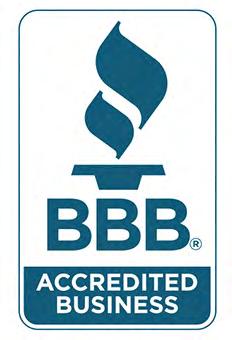

A managed loan plan would borrow strategies from managed care to pressure dental schools to reduce tuitions, the government to limit excessive lending and forgiving of debt, and students to bor row less and repay greater percentages of their loans. First, to reduce tuitions, the student loan process would develop a fiscal efficien cy rating metric and evaluate and grade the effectiveness of each school’s cost and tuition controls. Since, unlike dentists, schools do not operate under ethical constraints to place students’ and taxpay ers’ financial interests above the school’s financial interests, then the process would hold schools accountable and condition applicant loan eligibility, graduate repayment rate and school CODA accredi tation upon a school’s satisfactory rating for each institution.
For schools with unsatisfactory fiscal efficiency metrics, the government would limit or deny loans to that school’s student
Providing services throughout New York and New England. www.doctorscpa.com drothstein@doctorscpa.com (518) 851-9016
Dan Rothstein, D.D.S., M.B.A., C.P.A.
Member ADA, NYSDA, NYSSCPA and AICPA
Third, to ensure equitable repayment, eliminate universal loan cancellation programs and install a solely income-driven payment plan. Under this program, higher income graduates pay more, lower income graduates less, and schools would pay a fee proportional to their student default rates and loan cancellation amounts. Also, in crease opportunities for limited loan forgiveness in return for the bor rower’s commitment to public health service and teaching. In the end, these measures will reduce the debt unfairly passed on to taxpayers.
The dental student loan crisis stems from inefficiencies in a system that possesses all the elements necessary for its success. Patients demand quality oral healthcare. Sufficient prospective dental students aspire to meet the demand. Dental schools, with
ACCOUNTING,

Accounting for Dentistry, C.P.A., P.C. is a CPA firm created by a dentist for dentists.
Purchasing a practice is one of the most consequential events of your professional career.
Before you commit, be sure to obtain an independent assessment of the opportunity.
For over twenty years we have been providing comprehensive projections of the financial results dentists can expect in considering the purchase of a dental practice. We have no material interest that compels us to approve the transaction.
Unlike your banker or broker, we are an independent CPA firm acting exclusively as your advocate to provide unbiased projection results. We also never advise both sides of the deal, avoiding any possible conflict of interest.
Contact Dr. Rothstein directly and confidentially to discuss any aspect of the due diligence analysis, multi-year projection of results, financing issues, closing process and/or accounting, payroll, tax, compliance and managerial issues relating to the initiation of operations as a new owner.
We understand the business of dentistry.
Providing services throughout New York and New England. www.doctorscpa.com drothstein@doctorscpa.com
highly qualified faculty and administrators, stand poised to de liver state-of-the-art education. The government makes funds available to finance the undertaking. Managed loan strategies will inject the incentives and accountability necessary to ensure the fi nancial viability of the loan system and enable our future dentists to provide quality care to all patients.
1. Hornsby T. Dental school tuition soars for no good reason. https://www.studentloanplanner.com/ dental-school-tuition-soars/. Updated April 4, 2022.
2. Goldy-Brown S. Dental school costs in 2019. https://www.studentdebtrelief.us/resources/ dental-school-costs/. Updated November 11, 2019.
3. Clark C. What is the average dental school debt? https://www.nerdwallet.com/article/ loans/student-loans/average-dental-school-debt. February 3, 2022.
4. Hornsby T. Dental school tuition soars for no good reason. https://www.studentloanplanner.com/ dental-school-tuition-soars/. Updated April 4, 2022.
5. Hornsby T. Published cost estimates of dental school are totally wrong. https://www.studentloanplanner. com/cost-estimates-of-dental-school/. Updated April 4, 2022.
6. Goldy-Brown S. Dental school costs in 2019. https://www.studentdebtrelief.us/resources/ dental-school-costs/. Updated November 11, 2019.
7. Looney A. Why the dentist with $1 million in student debt spells trouble for federal loan programs. https://www.brookingsland.edu/blog/up-front/2018/05/30/why-the-dentistwith-1-million-in-student-debt-spells-trouble-for-federal-loan-programs/. May 30, 2018.
8. Yannelis C. Blanket loan forgiveness less effective than helping those who need it most, research suggests. https://news.uchicago.edu/story/research-suggests-smarter-way-solve-student-debt-problem. This piece was written by Constantine Yannelis, an assistant professor of finance at the Uni versity of Chicago Booth School of Business, and shared by Chicago Booth Review. The essay is based on testimony Yannelis submitted to the U.S. Senate Committee on Banking, Housing, and Urban Affairs’ Subcommittee on Economic Policy in April 2021.
NYSDJ Editor, Chester J. Gary, D.D.S., J.D., accepts 2022 Gies Editorial Award presented by Denise Stewart, D.D.S., M.H.S.D., American Dental Education Association, on behalf of American Association of Dental Editors and Journalists and American Dental Education Association ADEAGies Foundation. Dr. Gary received second-place honors for his editorial “Parallel Pandemics,” which appeared in the January 2021 Journal. Award presentation occurred Oct. 13 in Houston, TX, during AADEJ’s Annual Meeting.

NYSDJ to devote issue to what lies ahead for oral

The New York State Dental Journal is planning to devote its March 2023 issue to the topic “Profile of the Future Oral Healthcare Team,” an examination of the current and future members of the oral healthcare workforce in dentistry. We are looking, in particular, for papers that explore improvements in the delegation of duties to uniquely trained individuals to increase access to cost-effective, quality oral healthcare. In terested contributors are asked to submit their papers elec tronically to the managing editor by Jan. 27, 2023. Address papers and queries to Mary Stoll, mstoll@nysdental.org; (800) 255-2100.

New laws define job titles and responsibilities, set wages and protect health information.
Lance Plunkett, J.D., LL.M.As is my custom, I am devoting this November column to summing up disparate legal occurrences concerning new laws and events that lead into the following year. There are a number of such items in 2022.
First, is the remarkable clarification by the New York State Education Department (NYSED) of the use of Certified Registered Nurse Anesthe tists (CRNAs) by dentists.
The history of CRNAs is interesting. De spite many years (decades, actually) of trying to become a licensed profession, CRNAs have still not achieved this status. There is no mention of the term CRNA in the New York State Education Law governing licensure of nurses. Therefore, they have no scope of practice or official title other than being ordinary registered profession al nurses (RNs). They obviously have additional training in anesthesia, but the Education Law does not recognize it. They are not nurse prac titioners (NPs), who have an enhanced scope of practice that includes the ability to prescribe drugs. Some CRNAs might also have become NPs, but that is not a common occurrence and, interestingly, there is no NP-specific specialty designation for anesthesia.
Based on the foregoing history, one might rea sonably ask where CRNAs come from? What ex actly are they in New York State? The only place CRNAs are mentioned is in the hospital regu lations of the New York State Department of Health, where they appear as a category of hos pital personnel who assist with the provision of anesthesia services in hospital settings. But the Department of Health hospital regulations are incapable of conferring professional licensure status on CRNAs. For all practical purposes, they remain ordinary RNs in terms of scope of prac tice. That means that, like any RN, the CRNA can carry out a medical regimen specified by a physician or dentist. This is what allows them to provide anesthesia services in hospital settings under the control of a physician or dentist.
Outside of hospital settings, there has al ways been confusion about what CRNAs could do in dental offices, for example. The situation is exacerbated by opposition from physician groups, who don’t want them doing much at all; by Department of Health requirements that certified office-based surgery physician offices have supervising physicians present to watch any CRNA activities; and by the Education Depart
ment’s political sensitivity to mention of the term CRNA. But now, at the insistence of NYSDA, the Education Depart ment—through a collaboration among the State boards for Dentistry, Medicine and Nursing—has issued the following clarification, in a question-and-answer format, on CRNAs in dental offices:
13. Can a New York State licensed RN or nurse practitioner administer anesthesia to a dental patient in a private dental office under the supervision of a New York State licensed dentist if the nurse is also a Certified Registered Nurse Anesthetist (CRNA)?
Yes, under the following specified conditions:
• The supervising dentist must be currently certified by NYSED to administer the same level/type of anes thesia that will be provided to the patient [8 NYCRR §61.10(d)]; and
• The nurse is a licensed and registered RN AND a Certi fied Registered Nurse Anesthetist (CRNA):
• Acute care nurse practitioners (with more than 3,600 hours of nurse practitioner experience) who are CRNAs may order, prescribe, and administer anesthetic agents to dental patients in the private dental office. The supervising dentist must be physi cally present in the office while the CRNA provides anesthesia care to a dental patient. The CRNA may also provide anesthesia to a dental patient for a den tist who may not have NYSED anesthesia certifica tion as long as the supervising dentist (anesthesia certificate holder) is also physically in the office.
• In cases where the CRNA is not a nurse practitioner, the supervising dentist must order or prescribe an esthetic agents and other medications and remains medically responsible for the anesthesia care ren dered to the patient, including the patient’s response to the anesthesia. For this reason, the supervising dentist must be present and immediately available to intervene in the event of an adverse outcome while the patient is receiving anesthesia care from the CRNA. The supervising dentist may not assume any duties that interfere with this function (such as ad ministering anesthesia to a different patient).
While this clarification is very useful in defining what an ordinary RN/CRNA and a specialized acute care NP/ CRNA can do in a dental office without a physician being involved, it puts a burden on the dentist to know exactly what credentials the anesthesia provider holds. While den tists normally check on this anyway as a matter of good clinical risk management, the simple answer “I am a CRNA” will not be enough and will require an inquiry into what un
James E. Galati, President 1758 Route 9, Halfmoon, NY 12065
Anthony M. Cuomo, President-Elect 667 Stoneleigh Ave., Ste 301, Carmel, NY 10512 Prabha Krishnan, Vice President 11045 Queens Blvd., Ste 108, Forest Hills, NY 11375
Frank C. Barnashuk, Secretary-Treasurer 3435 Main St., UB School of Dental Medicine, Buffalo, NY 14214 Steven Gounardes, Speaker of the House 133 70th St., Brooklyn, NY 11209
Kevin A. Henner, Immediate Past President 163 Half Hollow Rd., Ste 1, Deer Park, NY 11729
Brendan P. Dowd, ADA Trustee 3435 Main St., UB School of Dental Medicine, Buffalo, NY 14214
NY – Maurice L. Edwards 30 East 60th St., Ste 401, New York, NY 10022
2 – John P. Demas 8814 Fort Hamilton Pkwy, Brooklyn, NY 11209
3 – Steven L. Essig Emblem Health, 1873 Western Ave., Albany, NY 12203
4 – Wayne S. Harrison 8 Medical Arts Ln., Saratoga Springs, NY 12866
5 – Margaret Madonian 600 Oswego St., Ste B., Liverpool, NY 13088
6 – Luis T. Mauleon 501 N. Cayuga St., Ithaca, NY 14850
7 – Theresa A. Casper-Klock 33 William St., Ste 1, Auburn, NY 13021
8 – Raymond G. Miller 1965 Como Park Blvd., Lancaster, NY 14086
9 – Gary M. Scharoff 1255 North Ave., Ste A1H, New Rochelle, NY 10804
N – Frank J. Palmaccio 875 Old Countr y Rd., Ste 101, Plainview, NY 11803
Q – Viren L. Jhaveri 14031 Cherry Ave., Apt. 18, Flushing, NY 11355
S – Guenter J. Jonke 2500 Nesconset Hwy., Bldg 24A, Stony Brook, NY 11790
B – Amarilis Jacobo 824 E. 181st St., Bronx, NY 10460
Council on Awards
Dental Benefit Programs
Dental Education & Licensure
Richard Andolina
74 Main St., Crossroad Professional Building Hornell, NY 14843
Patricia M. Hanlon 4 Lyme St., Wading River, NY 11792
Joseph Gambacorta 8 Grosvenor Rd., Buffalo, NY 14223
Dental Health Planning & Hospital Dentistry Sean McLaren 522 E Moreno Dr., Rochester, NY 14626
Dental Practice Lois A. Jackson 505 Laguardia Pl., Apt L4, New York, NY 10012
Ethics
Governmental Affairs
Nick J. Vittoria 859 Connetquot Ave., Ste 1, Islip Terrace, NY 11752
Robert F. Schaefer 110A W. Utica St., Oswego, NY 13126
Claudia Mahon-Vazquez 18 Biltmore Dr., Shoreham, NY 11786
Kevin A. Henner 163 Half Hollow Rd., Ste 1, Deer Park, NY 11729 Peer Review &
Nominations
Barry Sporer 80 Park Ave., Ste 1C, New York, NY 10016
derlying nursing license the person holds—a regular RN license or an acute care specialized NP license?
Always keep in mind that there is still no such thing as a CRNA license in New York State; CRNA is merely a training des ignation. Nevertheless, at least the word CRNA now has escaped the lips of the Education Department.
• On a very different subject, New York State raised the mini mum wage for employees to $15.00 per hour, but it has been phased in differently depending on the geographic region of the state. While the $15.00 per hour rate has already been in effect in New York City and Nassau, Suffolk and Westches ter counties, the phase-in has been slower in all other areas of the state. The New York State Department of Labor has now announced that starting Dec. 31, the minimum wage rate throughout the rest of New York State will be $14.20. It remains $15.00 in New York City and Nassau, Suffolk and Westchester counties.
• On the new law front, effective Aug. 17, registered dental assistants can now place and remove temporary restorations as a result of Gov. Hochul signing into law NYSDA’s bill on
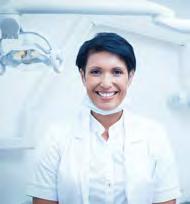
that subject as Chapter 512 of the Laws of 2022. The NYSDA bill to allow additional dental specialty residency programs such as oral medicine, dental public health and orofacial pain to qualify for dental licensure—A.9967 (Glick) / S.8808 (Stavisky)—has not yet been delivered to Gov. Hochul for ac tion.
• On employment laws, the New York City law on transparency in posting salary ranges for job advertisements, discussed at length in the April 2022 NYSDJ, took effect Nov. 1. The simi lar New York State legislation—A.10477 (Joyner)/S.9427—A (Ramos)—has not yet been delivered to Gov. Hochul for ac tion. Bills have been slowly trickling to the governor to sign or veto, but a large number will likely be sent to her after the midterm elections. Politics is the art of caution before an election.
• On the electronic health information front, the federal In formation Blocking Regulation took full effect on Oct. 6 for all electronic health information (EHI). The Information Blocking Regulation prohibits any practice that is likely to interfere with access, exchange or use of EHI, except as re quired by law or covered by an exception. It has been slowly phased in to cover certain data elements of EHI, but now it fully applies to all EHI.
The genesis of the Information Blocking Regulation was to stop a practice that some electronic health record (EHR) compa nies were deliberately adopting that made their EHRs incompat ible with other systems, thereby locking healthcare providers into exclusive use of their systems. It remains to be seen how the full regulation will affect interoperability of EHI systems, but the goal was to make interoperability easier and more effective.
When One Course Will Do Finally, a quick note on a question that came up recently on New York State’s mandated harassment prevention training. This training is required of all employers, no matter their size, in all parts of New York State. Section 201-g of the New York State Labor Law is very clear on that point. The training must be given every year. Where confusion has set in is that New York City has its own additional training requirements for employers with 15 or more employees. However, the New York State requirements for all employers also apply in New York City. Rather than have employers in New York City with 15 or more employees give two sets of sexual harassment prevention training, the city and state aligned their training programs so that the New York City train ing meets the New York State requirements if given by any em ployer in New York City. p

The material contained in this column is informational only and does not constitute legal advice. For specific questions, dentists should contact their own attorney.


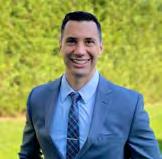

Dentists are urged to be alert to signs of sleep deprivation among their patients. They could be indications of obstructive sleep apnea, which if left untreated, can lead to serious consequences.
Arthur Feigenbaum, D.M.D.It is estimated that 54 million adults in the U.S. have obstruc tive sleep apnea (OSA) and that an overwhelming of them (80%) are undiagnosed or untreated. OSA treatment improves quality of life and leads to other important health outcomes.[1-4]
In 2017, the American Dental Association (ADA) recognized the integral role dentists play in helping patients seek diagno sis and treatment for OSA. Their policy “encourages dentists to screen patients for SRBD (sleep-related breathing disorder) as part of a comprehensive medical and dental history to recognize symptoms such as daytime sleepiness, choking, snoring or wit nessed apneas and an evaluation for risk factors such as obesity, retrognathia or hypertension. If risk for SRBD is determined, these patients should be referred, as needed, to the appropriate physicians for proper diagnosis.”[5]
If you think about it, trained dentists are the ideal healthcare providers to screen for OSA. How often have you had a patient fall asleep in your chair or mention that his wife is complain ing about his snoring? Dentists have a front row seat to patients’ airways, see patients often and have built relationships—some times across generations—with patients. These opportunities and trusted relationships put dentists in an optimal position to iden tify patients with undiagnosed OSA. We can use questionnaires and assess craniofacial and upper abnormalities during routine oral examinations to identify patients at increased risk for OSA.[6] Oral examinations commonly used by trained dentists are both
useful in identifying risk for OSA[7,8] and may enhance the effect of screening tools.[9]
Unfortunately, screening for OSA is usually not covered in dental school curricula, but the American Academy of Dental Sleep Medicine (AADSM), which is dedicated exclusively to help ing dentists screen and treat SRBD, has developed standards for screening, treating and managing adults with SRBD, as well as educational resources.[6] These screening resources are available at aadsm.org/screening.
Screening for OSA requires dentists to collect information on demographic and anatomic factors that put patients at increased risk. There are validated questionnaires that are commonly used for screening. The Epworth Sleepiness Scale assesses chronic tiredness but is not specific to OSA. The STOP-BANG question naire is commonly used by anesthesiologists and indicates a high probability of moderate-to-severe OSA.
You’ll use the information you collect during screening to decide whether the patient should be referred to a physician for diagnosis. Learning how to screen your future patients for OSA can set them on a path to renewed energy and better health, and they’ll have you to thank for it.
1. Female, 48 years old, 5 ft 5, 140 pounds. No snoring or gasping reported. No comorbid medical conditions but indicated day
time tiredness. She was a dental patient at one of our offices and was seen by our dental hygienist, who called me over to get my opinion. No anatomical issues were observed but patient was referred to a sleep physician to get tested. The sleep test indicat ed severe sleep apnea and the patient was given CPAP (continu ous positive airway pressure) device. This therapy could not be tolerated, and she returned to us for an oral appliance. She has now been normalized and her sleepiness has been eliminated. Sleep apnea can occur at any age and within any demographic. Symptoms can vary or may not even be noticed.
2. 1997. Female, 73 years old, deceased. Had hypertension, Type 2 diabetes, took afternoon naps, snoring, obese. Spent her last years in and out of hospitals for various cardiovascular ailments. Her quality of life became unmanageable. Nobody screened or treated her for sleep apnea.
Case study #2 was my mother. I guess in 1997, this was the standard of care. Afterall, before CPAP was invented, in the 1980s, the only treatment for OSA was tracheostomy, so only the very severe were treated. It shocks me that in 2022, there is still inadequate screening for this life-threatening condition.
It is imperative that we all screen for what is the largest noncommunicable disease in the world. It is not a disease of only overweight middle-aged males. Screen everyone! p
1. Aarab G, et al. Long-term follow-up of a randomized controlled trial of oral appliance therapy in obstructive sleep apnea. Respiration 2011.
2. Phillips CL, et al. Health outcomes of continuous positive airway pressure versus oral appli ance treatment for obstructive sleep apnea: a randomized controlled trial. Am J Respir Crit Care Med 2013.
3. Naismith SL, et al. Effect of oral appliance therapy on neurobehavioral functioning in ob structive sleep apnea: a randomized controlled trial. J Clin Sleep Med 2005.
4. Rietz H, et al. Nocturnal blood pressure is reduced by a mandibular advancement device for sleep apnea in women: findings from secondary analyses of a randomized trial. J Am Heart Assoc 2018.
5. American Dental Association 2019.
6. Levine M, et al. Dental sleep medicine standards for screening, treating, and managing adults with sleep-related breathing disorders. J. Dent Sleep Med 2018.
7. Liistro G, et al. High Mallampati score and nasal obstruction are associated risk factors for obstructive sleep apnoea. Eur Respir J 2003.
8. Ruangsri S, et al. Which oropharyngeal factors are significant risk factors for obstructive sleep apnea? An age-matched study and dentist perspectives. Nat Sci Sleep 2016.
9. Avincsal MO, et al. Modified Mallampati score improves specificity of STOP-BANG ques tionnaire for obstructive sleep apnea. J Craniofac Surg 2017.

Arthur Feigenbaum, D.M.D., is director of dental sleep medicine, Pro HEALTH Dental, and director of Dental Sleep Medicine, Delta Sleep Center of Long Island, Commack, NY. He is president-elect of Queens County Dental Society, a diplomate of the American Board of Dental Sleep Medicine and chairman of the AADSM Annual Meeting Committee. Queries about this article can be addressed to Dr. Feigenbaum at ajfdmd@gmail.com

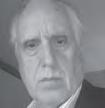





For more information about this and other Endorsed Programs call: 800-255-2100
Alliance Risk Group is the new NYSDA-endorsed provider for preand post- employment background investigation packages designed exclusively for NYSDA members at discounted rates. Don’t be in the dark when hiring your next staff person.

Find out more at our website at www.nysdental.org/endorsed or call 800-579-2911.

NYSDA Executive Director Gregory Hill, J.D., receives plaque designating him Honorary Fellow of Interna tional College of Dentists USA section from Section President Dr. Risé Martin. Presentation was made Oct. 14 in Houston, TX, at ICD Annual Meeting, held in conjunction with ADA SmileCon. Mr. Hill was among 335 dentists and dental professionals inducted into honor society for conspicuous service rendered in art and science of dentistry.

GETTING READY to submit your recently completed CE session for credit in the NYSDA Continuing Education Registry? Before you do, review the guidelines listed below to ensure your credits are recorded and your transcript is updated accurately.
Per the State Education Department, all CE submissions must include course title. If the title is not provided by NYSDA or one of the component societies, then the dentist submitting for credit must write in the title or send the completion certificate.
There continues to be a one-year limit to acceptance of CE submissions for inclusion in the Registry. The one-year limit will commence the day of a continuing education course and con clude exactly one year to that date. Submissions received after the one-year time period will not be accepted.
All submissions must include: official letter or certificate of completion from sponsor containing course attendee’s name and ADA #; course sponsor; course title and code; course date(s); type of course; and number of credit hours.
Any submissions that do not contain all the information listed above will be returned. Submissions returned to sender will not void or extend the one-year time limit as described above.
The NYSDA Registry does not accept AGD transcripts. However, it does accept AGD submission forms signed by an authorized sponsor or presenter. The Registry reserves the right to return any submission that does not contain or resemble an official authorizing signature.
All components that assume sponsorship of a continuing education course that is being hosted by one of its dental study clubs are responsible for the following:
• Reviewing course content to ascertain that it is a valid CE offering;
• Maintaining control over physical arrangements of course;
• Tracking attendance of dentists and auxiliaries taking course;
• Keeping appropriate records required by the State Education Department as a sponsor of course.
Submit attendance lists electronically to Brenda Turner at bturner@nysdental.org.
iCoreVerify, a product of iCoreConnect, Inc., cloud-based software-asa-service (SaaS) technology provider for healthcare business workflow, has been endorsed as the preferred insurance verification service for NYSDA members. iCoreVerify is NYSDA’s second endorsed product from iCoreConnect. The Association endorsed iCoreExchange encrypt ed HIPAA-compliant email more than five years ago.
Cloud-based iCoreVerify automates the insurance verification process by checking every patient on the schedule up to a week in advance of their appointment. This frees staff to spend their time on patient care and revenue-generating tasks.
iCoreExchange encrypted email software enables practices to securely and safely share patient information across providers without fear. Files of any size can be sent to anyone, whether they are members of iCoreExchange or not. All of iCoreConnect’s solu tions integrate with most major practice management systems in the United States. This means that practices don’t have to leave their current workflow to gain all the benefits of any of the cloud-based solutions available from iCoreConnect.
NYSDA Executive Director Greg Hill said about the endorse ment, “iCoreVerify is a home run for dental practices. Our NYSDA Support Services Board was so impressed when its members saw how iCoreVerify works. By being able to know where patients stand with their insurance plans, practices can better explain how the cost of treatment will impact patients. And the fact that it integrates so seamlessly with most practice management systems is another key way iCoreVerify takes a huge time burden off of staff. Staff time can now be freed up for other workforce purposes in the office.”

EFFECTIVE SEPT. 28, 2022, the American Dental Association (ADA) issued an order to suspend Dr. Joseph T. Mormino (NYS License No. 042434) from membership for one (1) year, thereafter placing him on probation for five (5) years, and are requiring sixteen (16) hours of continuing education in ethics within twelve (12) months of the date of their decision.




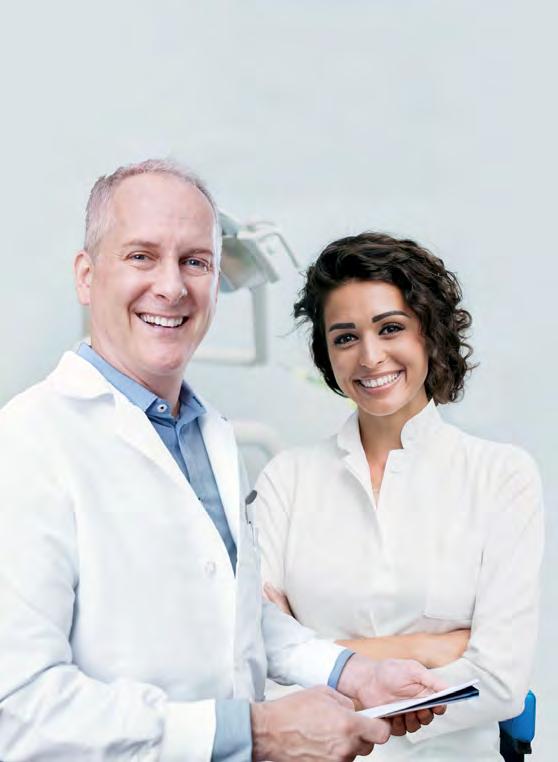
After an appeal hearing on Aug. 15, 2022, the ADA Council on Eth ics, Bylaws and Judicial Affairs found that Dr. Mormino had failed to participate in Peer Review and, as such, was in violation of Paragraph B of Section 20 Chapter X of the NYSDA Bylaws. Dr. Mormino had appealed the New York State Dental Association’s Council on Ethics decision with in the requisite 30-day timeframe to the ADA.
The decision of the ADA Council on Ethics, Bylaws and Judicial Af fairs became final as of Sept. 28, 2022.
Thomas McHugh

New York University ‘55 755 Epps Bridge Parkway, #34 Athens, GA 30606
April 6, 2022
THIRD DISTRICT
Harvey Alpart
Georgetown University ‘67 70 Springfield Drive Voorheesville, NY 12186 October 7, 2022
FIFTH DISTRICT
Peter Ceravolo Stony Brook University ‘83
Rein Maavere

University of Pennsylvania ‘60 100 Wilbourn Drive Crossville, TN 38558 October 3, 2022
Joseph N. Pozzi
Georgetown University ‘59 4 Wilshire Road Solvay, NY 13209 October 11, 2022
Gary J. Salatino
University of Detroit ‘76 26 Simone Terrace Webster, NY 14580
EIGHTH DISTRICT
John Maressa
University at Buffalo ‘66 6912 E Eden Road Hamburg, NY 14075 September 24, 2022
Ronald Steg
Temple University ‘52 700 Port Street, #4113 Easton, MD 21601 February 1, 2022
NINTH DISTRICT
Douglas Horsman University of Pennsylvania ‘54 139 Tonnacour Place Grosse Pointe Farms, MI 48236 December 12, 2021
SUFFOLK COUNTY
Joseph Thaler
Columbia University ‘60 17 Dana Lane East Islip, NY 11730 April 10, 2022

Background: The investigators aim to determine the frequency of systemic medications in patients with oral lichen planus or oral lichenoid lesions.
Methods: A retrospective study of lichenoid diagnoses in the New York University College of Dentistry Oral Medicine Clinic. Data obtained included patient demographics, prescription medications and pathologic diagnosis. Comparative analysis was performed.
Results: A total of 162 oral lichenoid lesion/oral li chen planus patients were identified. The most frequently found medications were antihypertensives, antihyperlipidemics, followed by metformin, protonpump inhibitors and levothyroxine.
Conclusion: The findings emphasize the importance of clinicians’ awareness of potential oral adverse reactions from certain medications.

Drug-induced lichenoid reactions have previously been docu mented in the literature, although not often with a detailed breakdown of specific medications. As various medications have been reported to be associated with oral lichenoid lesions (OLL)
and oral lichen planus (OLP), this study investigated the specific medications taken concurrently by patients being treated for OLL and OLP at the New York University College of Dentistry Oral Medicine Clinic.
OLL and OLP have similar clinical presentations that are of ten indistinguishable. Both are characterized by predominantly white-striated, erythematous and sometimes ulcerative or erosive lesions of the buccal mucosa, tongue and/or gingiva, where they may present as a desquamative gingivitis.[1] The etiology of OLL is not completely understood and has been described as being trig gered by exogenous sources, including dental amalgam restora tions, irritants or as a drug reaction to certain medications.[2-4] The pathogenesis of OLP is considered to be a T cell-mediated immunological reaction to an unknown antigen.[5] While the eti ology of OLP is unknown, medications have been proposed as a possible precipitating factor.[6]
Existing data evaluating the association between the presence of OLL and OLP and the use of prescription medications stems from a few preliminary studies and individual case reports.[4,7-9] In prior studies, the most commonly found classes of medica tions among OLL patients were NSAIDs, diabetes medications, antihypertensives and antihyperlipidemics.[4,7] There also exists literature documenting systemic diseases associated with OLP; specifically, the term “Grinspan syndrome’’ describes the concur rence of severe lichen planus, hypertension and diabetes.[10] In a meta-analysis, OLP patients were found to be significantly more
likely to have thyroid disease than controls, with hypothyroidism and Hashimoto’s thyroiditis being the most frequently identified diseases in these studies.[11]

Both OLP and OLLs have the potential for malignant trans formation. Recent studies have shown a slightly higher malignant transformation rate in OLL (2.43% to 3.2%) than in OLP (1.09% to 1.37%).[12-15] Additionally, OLP and OLL can be severe and painful and, at times, resistant to treatment with topical cortico steroids. When topical corticosteroids are not effective, systemic corticosteroids may be employed, putting the patient at risk for adverse side effects.
This study aims to identify common systemic medications concurrently taken by patients being treated for OLL or OLP. The end result is to better understand which medications may be as sociated with these oral lichenoid diseases so that clinicians are aware and manage their patients appropriately.
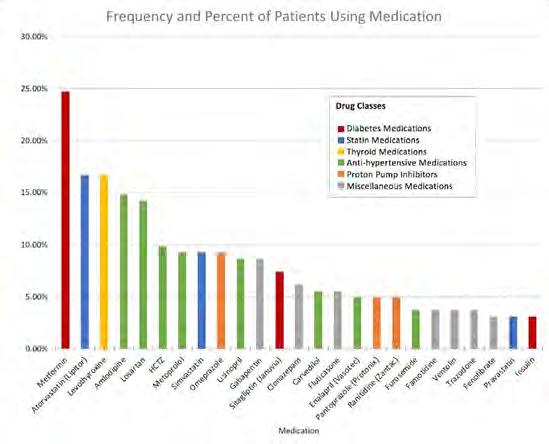
After clinical observation in the NYU College of Dentistry Oral Medicine Clinic revealed that many patients being treated for oral lichenoid diseases were taking thyroid and/or statin medications, a thorough literature review uncovered a paucity of data on the association of these medications with oral lichenoid diseases. This study was then designed to address the deficiency.
Institutional review board approval was obtained through the New York University School of Medicine Institutional Review Board. The electronic health record (EHR) was accessed to obtain data from Jan. 1, 2015, through Sept. 30, 2019. Inclusion criteria consisted of patients aged 18 and older at the time of clinical presentation, with the following diagnoses: “oral lichen planus,” “lichenoid mucositis” and “lichenoid drug reaction.” Patients also needed to have medication/prescription information record ed in the EHR, with simultaneous treatment or diagnosis of oral lichenoid disease.
Two authors had access to the data and all information was de-identified. Study personnel made no contact with patients at any time throughout the study, and no PHI was recorded. Re corded data included diagnosis (clinical and/or pathologic), basic demographics (age, gender), and current prescription medica tions. For cases that were not biopsy-proven, the standard clinic protocol is that the clinical presentation must exhibit the charac teristic white Wickham striae for a patient to be given the clinical diagnosis of OLL or OLP (Figure 1). Any clinical diagnosis of OLL or OLP was rendered by one of four oral medicine experts in the Oral Medicine Clinic, and biopsy was performed in cases with any doubt.
Patients with a biopsy-proven diagnosis of a vesiculo-erosive disease, such as pemphigus vulgaris or mucous membrane pem phigoid, were excluded. Patients with a diagnosis of an oral li chenoid disease in the EHR, but who had never been seen in the
 Figure 1. Example of characteristic Wickham striae and reticular pattern on buccal mucosa used to clinically diagnose OLL and OLP cases. Erythematous areas also seen.
Figure 2. Frequency and percent of study patients using specific medications with color-coded drug classes.
Figure 1. Example of characteristic Wickham striae and reticular pattern on buccal mucosa used to clinically diagnose OLL and OLP cases. Erythematous areas also seen.
Figure 2. Frequency and percent of study patients using specific medications with color-coded drug classes.
Oral Medicine Clinic or if the diagnosis code was used errone ously were excluded. All data was maintained on a secure server in compliance with Institutional Review Board requirements. Comparative qualitative analyses were then performed to assess the data collected.
A total of 162 patients were identified who were diagnosed with OLL/OLP and/or treated in the NYU College of Dentistry Oral Medicine Clinic from Jan. 1, 2015, through Sept. 30, 2019. Sub jects were predominantly female, with 109 females (67%) and 53 males (33%). The average age was 59.5 years, with a range of 26 to 88 years. About 30% of patients fell within the ages of 60 to 69 years. Among all subjects, 46.9% (n=76) were found to have biopsy-proven diagnoses of OLP or OLL.
The most common medication taken among subjects was metformin, comprising 24.6% (n=40). The most common phar macologic class was statin medications, at 36.4% (n=59); specifi cally, 15% (n=25) of patients took atorvastatin and 9% (n=15) took simvastatin. We also discovered that 17.9% (n=29) took proton-pump inhibitors and, interestingly, 16.7% (n=27) took le vothyroxine. These results are summarized in Figure 2 and Table 1.
Antihypertensives were the most common therapeutic class of medications among our subjects, at 49.4% (n = 80). As seen in Fig ures 2 and 3, when hypertension medications (color-coded green) are further subdivided into pharmacologic classes, beta blockers were the most associated with OLL/OLP, followed closely by angiotensinII-receptor blockers (ARBs) and calcium channel blockers (CCB). The thiazides are the next frequent type of hypertension medications taken by our OLL/OLP patient cohort. To our knowledge, our study is the first to further subtype the large and diverse class of hyperten sion medications associated with oral lichenoid lesions.
Overall, most subjects were taking multiple medications, with just 12% taking no medications. Of the 15 subjects (9.3%) who were taking solely one medication, four were taking levothyroxine.

The etiology of OLL and OLP is a confounding subject for both general clinicians and specialists treating the symptoms and dis ease. Although there is a well-known association of OLL/OLP with medications, the mechanism and extent of this relationship are poorly understood and not well-documented in literature. Evaluating OLL/OLP in patients who are taking commonly pre scribed medications in comparison to the proportion of the gen eral population that is taking the same prescription medications may elucidate a potentially overlooked association.
Hypothyroidism and Hashimoto’s thyroiditis (HT) have been linked to oral lichenoid diseases in recent literature.[11,16-19] One study investigated the prevalence of undiagnosed thyroid disease in patients with OLL and OLP and found no correlation in pa tients with hypothyroidism; however, researchers found a statis tically significant association of OLL/OLP with HT.[16] HT is an autoimmune condition with a similar pathology to OLP, as both diseases consist of a dense lymphocytic infiltrate and basal cell necrosis.[16,20] Of note, these studies do not include documenta tion of levothyroxine intake. In a European cohort, 222 OLL/OLP patients were evaluated. Of these, 10% were diagnosed with hy pothyroidism and were taking levothyroxine; however, this value was not statistically significant compared to the controls.[18] In a recent meta-analysis of studies of OLP and thyroid disease, eight papers were included and OLP was found to have a strong posi tive and statistically significant correlation to thyroid disease.[11]
Our OLL/OLP cohort documented 16.7% of subjects taking levothyroxine for thyroid disease at the time of presentation. In the general US population, the reported prevalence of individuals with clinically managed hypothyroidism is significantly lower, with only 6.4% of people taking hypothyroid medications.[21] Thus, there is a significantly higher prevalence of thyroid disease in the OLL/OLP cohort in this study versus that of the general population. This dis
parity may be partially due to the patient demographic evaluated; our study’s female-to-male ratio was 2:1, and mean age was 59.5, similar to the demographic of patients with hypothyroidism. Fe male patients older than 60 have been shown to be more likely to have a diagnosis of hypothyroidism and, thus, make up 34% of our study population.[22] Although specific studies on levothyroxine are scant, it is also worth mentioning a case report of cutaneous li chenoid eruptions in a patient who overdosed on levothyroxine, in which it was concluded that levothyroxine was indeed the trigger as the lesions resolved with medication withdrawal.[23]
Other cohorts have considered the prevalence of OLP in the set ting of hyperlipidemia/hypercholesterolemia and patients treated with statin (HMG-CoA reductase inhibitor) medications.[24-26] In our study, 36.4% (n = 59) of patients were taking statin medica tions for hyperlipidemia, whereas the prevalence of Americans taking statin medications is 17% in adult patients.[21] Therefore, there is a higher percentage of OLP/OLL patients in our cohort taking a statin medication for hyperlipidemia when compared with the general American population.
For the year 2011-2012, 5.5% of American individuals were tak ing metformin to treat diabetes, according to surveillance re search.[21] In our study cohort, 24.6% of individuals were taking metformin at the time of presentation, which is considerably greater than other reports in recent literature. One study reported that 14% of OLL patients in their cohort were taking anti-diabet ic medications but did not distinguish between classes or limit to metformin.[7] The 24.6% figure, compared to the American average in 2018 of 9.1% of individuals diagnosed with diabetes mellitus,[27] indicates a noticeably higher prevalence of patients receiving treatment for diabetes in our OLL/OLP cohort in com parison with the general population.
Similarly, 49.4% (n=80) of patients in our study population were taking varying classes of antihypertensive medications, with beta blockers being the most common class, at 17.9% of our cohort. When compared to the 27% of the general population in the United States taking antihypertensive medications,[21] this OLP/ OLL patient cohort demonstrates a higher frequency of hyper tension and intake of antihypertensive medications of varying classes. Furthermore, in specifically addressing beta blocker medi cations, which were most commonly encountered in our study, the reported prevalence was 11% of American individuals for the year 2011-2012.[21] Thus, the OLP/OLL study cohort had higher prevalence of patients taking beta blockers and taking antihyper tensives in general compared to the US population.
This cohort had an interestingly high number of patients taking proton-pump inhibitors (PPIs): 17.9%. There are a few case reports in the literature describing a direct association between PPIs and cutaneous lichen planus. In one such case, three different PPIs were initiated and terminated and the cutaneous LP recurred with each PPI.[28,29] Survey research studies have found that for the year 2011-2012, 7.8% of Americans reported taking proton-pump in hibitors for GERD.[21] While values reporting prevalence of GERD in the American population may have increased in recent years, our subjects are being evaluated in the setting of medication ad ministration for treatment, not to establish an association between chronic disease process (GERD) and OLP/OLL. Therefore, the data from studies comprising individuals who are taking medication provides a solid platform for comparison with our patient cohort, establishing a significantly higher percentage of the population taking PPIs that are affected by OLP/OLL (17.9%) versus preva lence in the general population (7.8%).[21]
One discrepancy between our findings and previous studies is the frequency of patients with OLP/OLL taking NSAIDs. One study reported 46% of OLL/OLP patients taking NSAIDs,[7] while only 7% of patients in our cohort were prescribed NSAIDs. This is likely due to common use of NSAIDs as an over-the-counter medication that did not populate in the EHR medications tab used in our study.
A potential shortcoming of our study was that only 46.9% (n=76) of patients had a biopsy-proven OLP or OLL diagnosis. For pa tients who displayed a pathognomonic clinical presentation, including lesions of the bilateral buccal mucosa with Wickham striae, a clinical diagnosis was rendered in confidence by an oral medicine specialist without performing a biopsy.
Another possible limitation of this retrospective chart re view is that it is not known when patients began taking their medications and when the lichenoid lesions first appeared. To better correlate a drug reaction, it would be ideal to pinpoint a contemporaneous causation with initiation of medication. As the literature consists of primarily case reports, there is very little data of a proven causative effect by withdrawal of medication and resolution of lesions. One such systematic review only identified six studies with strict inclusion criteria.[9] Relating a drug to a lichenoid lesion can present a challenge, as many times patients are initially asymptomatic.
While the aim of the study was to identify medications as sociated with lichenoid diseases, it would also have been benefi cial to have documentation of medical conditions. For instance, we identified patients taking levothyroxine, but were unable to distinguish which patients had hypothyroidism and which had Hashimoto’s thyroiditis (HT). Considering that HT has a poten
tially similar pathophysiology to OLP, as stated previously; ob taining medical history could further support an association.[16]
The many strengths of this investigation include identifica tion of a substantial cohort of patients of 162 individuals with lichenoid lesions. There have been few studies evaluating the medication profile in patients with oral lichenoid disease. Use of HER-documented diagnoses facilitated data acquisition and al lowed us to evaluate the specific medications taken. While most previous studies only documented pharmacologic classes, our data includes individual medications taken, thus providing a more thorough conglomerate of data. Our data on antihyperten sives, antihyperlipidemic drugs and levothyroxine reinforce that of previous case reports on a larger scale.
Although this study does not prove causality, we identified a sub stantial population of OLL and OLP patients treated in our clinic who were taking antihypertensive, antihyperlipidemic, diabetes, thyroid hormone and/or proton-pump inhibitor medications. The prevalence of the aforementioned medications in our cohort was considerably higher than in the general population. Patients and prescribers should be fully informed of potential adverse reactions that can occur in the oral cavity while taking these medications.
OLL and OLP can be painful and debilitating when severe, and they both share a small risk of malignant transformation. Dental care providers should be screening for OLL and OLP in patients taking medications identified to have a strong association with OLL and OLP. p
This research did not receive any specific grant from funding agencies in the public, commercial or not-for-profit sectors. None of the authors reported any disclosures. Queries about this article can be sent to Dr. Fischoff at debra.fishoff@gmail.com.

1. Al-Hashimi I, Schifter M, Lockhart PB, et al. Oral lichen planus and oral lichenoid lesions: diagnostic and therapeutic considerations. Oral Surg Oral Med Oral Pathol Oral Radiol Endod 2007;103(suppl:S25):e1–e12. doi:10.1016/j.tripleo.2006.11.001.
2. Thornhill MH, Pemberton MN, Simmons RK, Theaker ED. Amalgam-contact hypersensi tivity lesions and oral lichen planus. Oral Surg Oral Med Oral Pathol Oral Radiol Endod 2003;95(3):291–299. doi:10.1067/moe.2003.115.
3. Syed M, Chopra R, Sachdev V. Allergic reactions to dental materials – a systematic review. J Clin Diagn Res 2015;9(10):ZE04–ZE09. doi:10.7860/JCDR/2015/15640.6589.

4. Yuan A, Woo SB. Adverse drug events in the oral cavity. Oral Surg Oral Med Oral Pathol Oral Radiol 2015;119(1):35–47. doi:10.1016/j.oooo.2014.09.009.
5. Nogueira PA, Carneiro S, Ramos-e-Silva M. Oral lichen planus: an update on its pathogen esis. Int J Dermatol 2015;54(9):1005–1010. doi:10.1111/ijd.12918.
6. Lodi G, Pellicano R, Carrozzo M. Hepatitis C virus infection and lichen planus: a systematic re view with meta-analysis. Oral Dis 2010;16(7):601–612. doi:10.1111/j.1601-0825.2010.01670.x.
7. Alqahtani M, Woods TR, Smith MH, Bhattacharyya I, Cohen DM, Islam MN, Fitzpatrick SG. Medication use and medical history of 155 patients with oral lichenoid lesions: a retro spective study. Gen Dent 2018;66(2):40–45.
8. Robledo-Sierra J, Mattsson U, Jontell M. Use of systemic medication in patients with oral lichen planus – a possible association with hypothyroidism. Oral Dis 2013;19(3):313–319. doi:10.1111/odi.12009.
9. Fortuna G, Aria M, Schiavo JH. Drug-induced oral lichenoid reactions: a real clinical entity? A systematic review. Eur J Clin Pharmacol 2017;73(12):1523–1537. doi:10.1007/s00228017-2325-0.
10. Grinspan D, Diaz J, Abulafia J, et al. Our experience with lichen ruber planus of the buccal mucosa. Ann Dermatol Syphiligr 1966;93(5):531–542.
11. Li D, Li J, Li C, Chen Q, Hua H. The association of thyroid disease and oral lichen pla nus: a literature review and meta-analysis. Front Endocrinol 2017;8:310. doi:10.3389/ fendo.2017.00310.
12. Fitzpatrick SG, Hirsch SA, Gordon SC. The malignant transformation of oral lichen pla nus and oral lichenoid lesions: a systematic review. J Am Dent Assoc 2014;145(1):45–56. doi:10.14219/jada.2013.10.
13. Giuliani M, Troiano G, Cordaro M, et al. Rate of malignant transformation of oral lichen planus: a systematic review. Oral Dis 2019;25(3):693–709. doi:10.1111/odi.12885.
14. Ruokonen H, Juurikivi A, Kauppila T, Heikkinen AM, Seppänen-Kaijansinkko R. High per centage of oral lichen planus and lichenoid lesion in oral squamous cell carcinomas. Acta Odonto Scand 2017;75(6):442–445. doi:10.1080/00016357.2017.1332777.
15. Bardellini E, Amadori F, Flocchini P, Bonadeo S, Majorana A. Clinicopathological features and malignant transformation of oral lichen planus: a 12-year retrospective study. Acta Odonto Scand 2013;71(3-4):834–840. doi:10.3109/00016357.2012.734407.
16. Zhou T, Li D, Chen Q, Hua H, Li C. Correlation between oral lichen planus and thy roid disease in China: a case-control study. Front Endocrinol 2018;9:330. doi:10.3389/ fendo.2018.00330.
17. Garcia-Pola MJ, Llorente-Pendás S, Seoane-Romero JM, Berasaluce MJ, García-Martín JM. Thyroid disease and oral lichen planus as comorbidity: a prospective case-control study. Dermatology 2016;232(2):214–219. doi:10.1159/000442438.
18. Siponen M, Huuskonen L, Läärä E, Salo T. Association of oral lichen planus with thyroid disease in a Finnish population: a retrospective case-control study. Oral Surg Oral Med Oral Pathol Oral Radiol Endod 2010;110(3):319–324. doi:10.1016/j.tripleo.2010.04.001.
19. Lavaee F, Majd M. Evaluation of the association between oral lichen planus and hypothy roidism: a retrospective comparative study. J Dent (Shiraz, Iran) 2016;17(1):38–42.
20. Neville BW, Damm DD, Allen CM, Chi AC. Oral and Maxillofacial Pathology. 4th ed. Elsevier; 2016.
21. Kantor ED, Rehm CD, Haas JS, Chan AT, Giovannucci EL. Trends in prescription drug use among adults in the United States from 1999–2012. JAMA 2015;314(17):1818–1831. doi:10.1001/jama.2015.13766.
22. Pruthi S, MD. Hypothyroidism (underactive thyroid). Mayo Clinic. January 7, 2020. Up dated November 19, 2020. Accessed July 23, 2020. https://www.mayoclinic.org/diseasesconditions/hypothyroidism/symptoms-causes/syc-20350284.
23. Kaur S, Bhalla M, Thami GP. Subacute lichenoid eruption due to L-thyroxine overdosage. Dermatology 2003;206(4):346–347. doi:10.1159/000069952.
24. Pua VS, Scolyer RA, Barnetson RS. Pravastatin-induced lichenoid drug eruption. Australia J Dermatol 2006;47(1):57–59. doi:10.1111/j.1440-0960.2006.00225.x.

25. Sebök B, Tóth M, Anga B, Harangi F, Schneider I. Lichenoid drug eruption with HMG-CoA reductase inhibitors (fluvastatin and lovastatin). Acta Derm Venereol 2004;84(3):229–230. doi:10.1080/00015550310006851s.
26. Wong I, Huang Y, Zhou Y. Drug eruption to rosuvastatin with recurrence on simvastatin: a case report. J Cutan Med Surg 2018;22(3):359–361. doi:10.1177/1203475418756376.
27. National Health Interview Survey United States Diabetes Surveillance System. Centers for Disease Control and Prevention. Updated November 2020. Accessed July 23, 2020. https:// gis.cdc.gov/grasp/diabetes/DiabetesAtlas.html.
28. Bong JL, Lucke TW, Douglas WS. Lichenoid drug eruption with proton-pump inhibitors. BMJ 2000;320(7230):283. doi:10.1136/bmj.320.7230.283.
29. Brauer J, Votava HJ, Meehan S, Soter NA. Lichenoid drug eruption. Dermatol Online J 2009;15(8):13
Debra K. Fischoff, D.M.D., M.S., is clinical assistant professor, Department of Oral and Maxil lofacial Pathology, Radiology and Medicine, New York University College of Dentistry; New York, NY.

Sara Sternbach, D.D.S., recently completed an oral and maxillofacial pathology residency at Zucker School of Medicine, Hofstra Northwell Health, Long Island Jewish Medical Center; Lake Success, NY. She received her dental degree from New York University College of Dentistry in 2019.


Juliana Gomez, D.D.S., is an oral and maxillofacial surgery resident, Department of Oral & Maxil lofacial Surgery, Ascension Macomb-Oakland Hospital, Detroit, MI. She received her dental degree from New York University College of Dentistry in 2019.
Sonal S. Shah, D.D.S., is an associate professor of oral pathology at the University of Nevada Las Vegas. She was formerly a clinical assistant professor, Department of Oral and Maxillofacial Pathology, Radiology and Medicine, New York University College of Dentistry, New York, NY.

Brendan Dowd, D.D.S.; Betsy Bray, R.D.H., B.S.
The Dental Demonstration Project (DDP), conducted under the auspices of the New York State Dental Association, was studied over a five-year period—a total of 24 events—to evaluate how events and follow-up intervention influenced the dental health home status of patients who attended.
Objectives 1 and 2: One, to evaluate the impact of offering free dental care to new patients at events in federally qualified healthcare centers (FQHCs) or Article 28 facilities by determining how many patients return for a subsequent visit in an attempt to secure a dental home; and two, to identify barriers to care associated with access to oral health by patients attending DDP events.
Methods: Patients received dental care at no cost at coordinated events, including emergent care, extractions, direct restorations and prophylaxis. They were counseled on the importance of continuous dental care, provided oral hygiene instructions and given
access to a facilitated insurance enroller. Subsequent to the event, partner facility staff followed up to iden tify how many patients who attended the free event had a follow-up visit to continue their care.
A dental questionnaire was provided to event participants to gain a better understanding of commu nities that access free dental events, identify barriers to care and determine the prevalence of pain. The self-reported questionnaire was voluntary and anonymous. Nine hundred fifty-two patients completed the questionnaire from project years two through five.
Access to dental care within the United States continues to be problematic. It has only been within the last 20 years that mea surable statistics have been compiled to substantiate access to care as a barrier.[1] Indeed, all one has to look at is the increased use of hospital emergency rooms for acute, dental-related issues. In a 2012 study, Wall demonstrated that over a 10-year period, dental-related hospital emergency department visits increased
The article presented here is a follow-up to the previously published “Volunteering to Help the Needy Among Us,” by Brendan Dowd, D.D.S. (NYSDJ 2018;84(1):20-23).
from 1.15% to 1.87% of total ED visits.[2] In 2018, there were over two million emergency department visits in the United States for dental-related pain, at a cost of more than $2 bil lion dollars.[3] With the cost per visit ranging between $400 and $1,500, an exorbitant amount of funding is spent on a tempo rary fix with little impact on improving health outcomes.
There are many purported reasons for the lack of regular and ongoing dental care. The primary contributor remains the cost. People routinely hold off on routine care or delay emergent care because they simply cannot afford it.[4] In fact, dental care has the highest level of cost barriers, defined as the percentage of popula tion reporting they needed to obtain select healthcare services in the past 12 months, by a figure of (8.9%). This is compared to other health services, including prescription drugs (5.3%), medi cal care (5.0%), eyeglasses (4.8%) and mental health services (1.7%).[5]
Dental insurance, private and public, is complicated and varies in levels of coverage. Private insurance is tied to employ ment, and many employers do not include dental coverage in their health benefit packages.[6] Many of these plans only cover preventative care, not restorative and rehabilitative care, or do so at a reduced percentage of the overall cost. Public oral health insurance, usually through state Medicaid programs, varies sig nificantly from state to state.
All states have dental Medicaid for children, but some states only provide emergency care for adults. Adult dental care is also not an essential benefit under the Affordable Health Care Act. One study shows a strong correlation between Medicaid dental coverage and the utilization rate for adults.[7] At this point, Medi care only participates in preventative care for a select group of covered individuals and patient options for some restorative work under Medicare Part B.[8]
Further complicating this issue is people in the general popu lation are unaware of a sliding-fee scale related to level of in come available at FQHCs and Article 28 facilities. A quote from the Executive Summary of the recently released “Oral Health in America: A Report of the Surgeon General” from the National Institutes of Health and the National Institute of Dental and Cra niofacial Research stated:
“One overarching challenge to oral health that has persisted during the last 20 years is the inadequate access to dental care that adversely affects millions of individuals and their families. This par ticularly affects older adults who do not have dental insurance cover age, and unlike for children and adolescents, there are few programs to address this issue. This chronic lack of access to oral health care leads inevitably to untreated disease and, frequently, to pain.”[9]
Oral health is an integral part of overall health. Some people fail to understand the value of regular and ongoing preventative care and only receive episodic care or no care at all.[10] The term “dental home” has only been in existence for approximately a
decade and an instrument that measures the concept is still in the process of being developed.[11] A dental home is the ongoing relationship between the dentist and the patient, inclusive of all aspects of oral healthcare delivered in a comprehensive, continu ously accessible, coordinated and family-centered way.[12] The dif ficulty of motivating patients to access ongoing care routinely can be challenging. Consequently, an important aspect of the Dental Demonstration Project (DDP) events is educating the patients, linking them to resources and instilling the importance of seek ing access to care and establishing a dental home.
Therefore, a community-based protocol to measure the im pact of providing free treatment while introducing a dental home to vulnerable populations was developed. The results were mea sured by (a) the percentage of participants who, on the day of the event, agreed to a follow-up appointment and (b) the number of patients who appeared for a follow-up visit. These outcomes were compared to the questionnaire results and exemplify the barriers to care captured on the day of the event.
A total of 24 one-day events offering free dental care to new patients at federally qualified healthcare centers or Article 28 facilities were provided across the state over a five-year period be ginning in 2015. The funding, provided by the state and overseen by the Department of Health, allows for host facility overhead costs, event advertising, NYSDA project staffing, and meals and travel for volunteer providers.
Each year, NYSDA applied and received funding from New York State to operate the DDP. The chronological year carried from April 1 through March 31, matching the New York State fiscal year. Events were targeted to designated access-to-care shortage areas, scheduled over a five-year period and focused on underserved populations.
As the project is state-funded, the emphasis was placed on broadening event locations and demographic reach. At each facility, an event was organized in concert with the host administration, dental director and DDP team. New patients who were interested in being seen were scheduled for appoint ments beforehand. The number of patients seen depended on the size of the facility and the number of dental chairs avail able in the clinic.
Volunteer providers, including general dentists, oral surgeons and dental hygienists, came to the center to perform work for the day. Emergent care, such as tooth extractions, direct restora tions and in some locations same day denture repairs, were all performed free-of-charge. Prophylaxes were also performed on patients who were not in need of restorative care or in addition to restorative care. The host facility provided follow-up emergency care for postoperative procedures completed by the volunteer pro viders. The host facility also kept separate computer records of the
new patients in order to differentiate them from current patients. Partners were contacted after each event to identify the number of patients who returned for continuous care (Table 1).

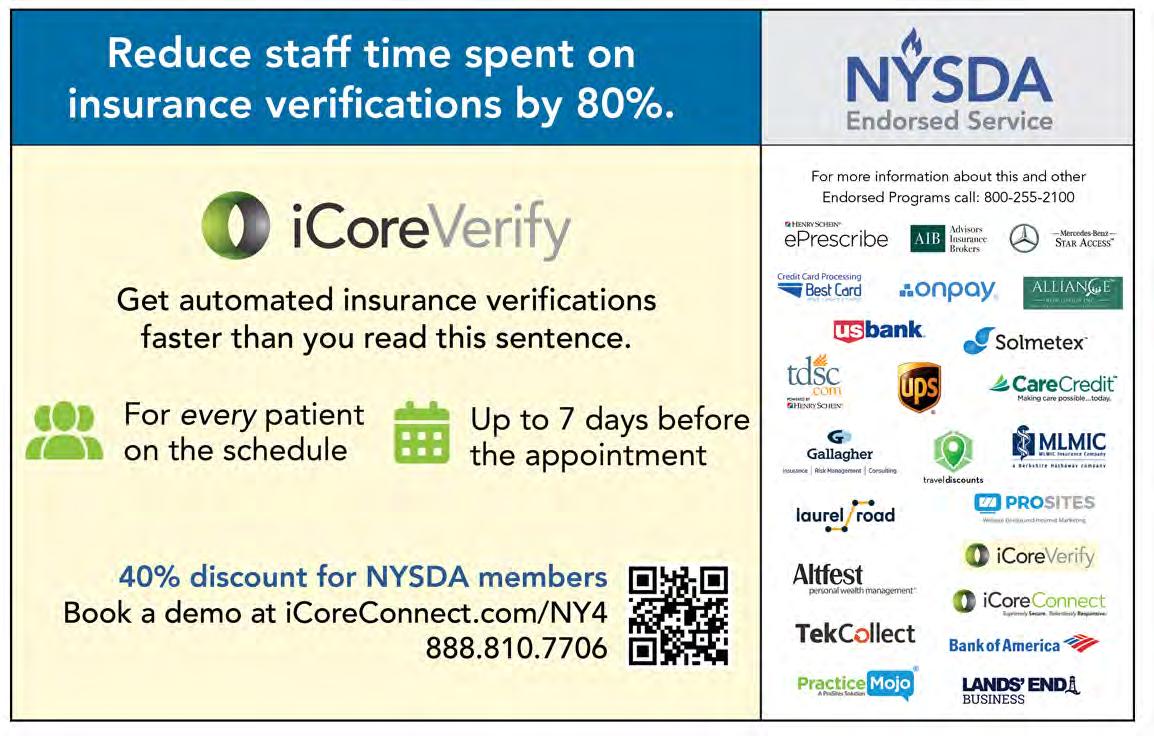
The project was designed with flexibility and the ability to target the needs of a particular community the partner facility identifies as underserved. In one instance, a collaborative event with a local hospital, which was unable to see the patients long term due to clinic capacity, connected veterans to dental homes, matching patients with volunteer dentists in the community for follow-up care. Facilitated enrollers were available at each event to advise patients on insurance coverage and enrollment, while support staff played a crucial role in delivering care, educating patients and reinforcing the importance of continuous care.
Between project years two and five, 952 participants completed the patient oral health questionnaire (Figure 1). The results of the survey indicated that the proportion of patients who had not received any type of dental care in one to three years was 32% and that those who had not accessed dental care in over three years
was 38%. The primary reason cited for lack of care was financial (52%), while “other” reasons accounted for 22% of those sur veyed. Among examples of “other” were transportation, time off work, physical ailments and inability to obtain a caregiver for a family member.
Thirteen percent of those surveyed said they did not seek dental care because they did not perceive a problem that war ranted a visit, while 13% cited fear as their main barrier to receiv ing dental care. Fifty-three percent of those surveyed did not have dental insurance, while 27% had no health insurance at all. Of all participants surveyed, 39% reported experiencing pain in the last month, and 6% had visited the emergency department for dental-related ailments (Figure 2).
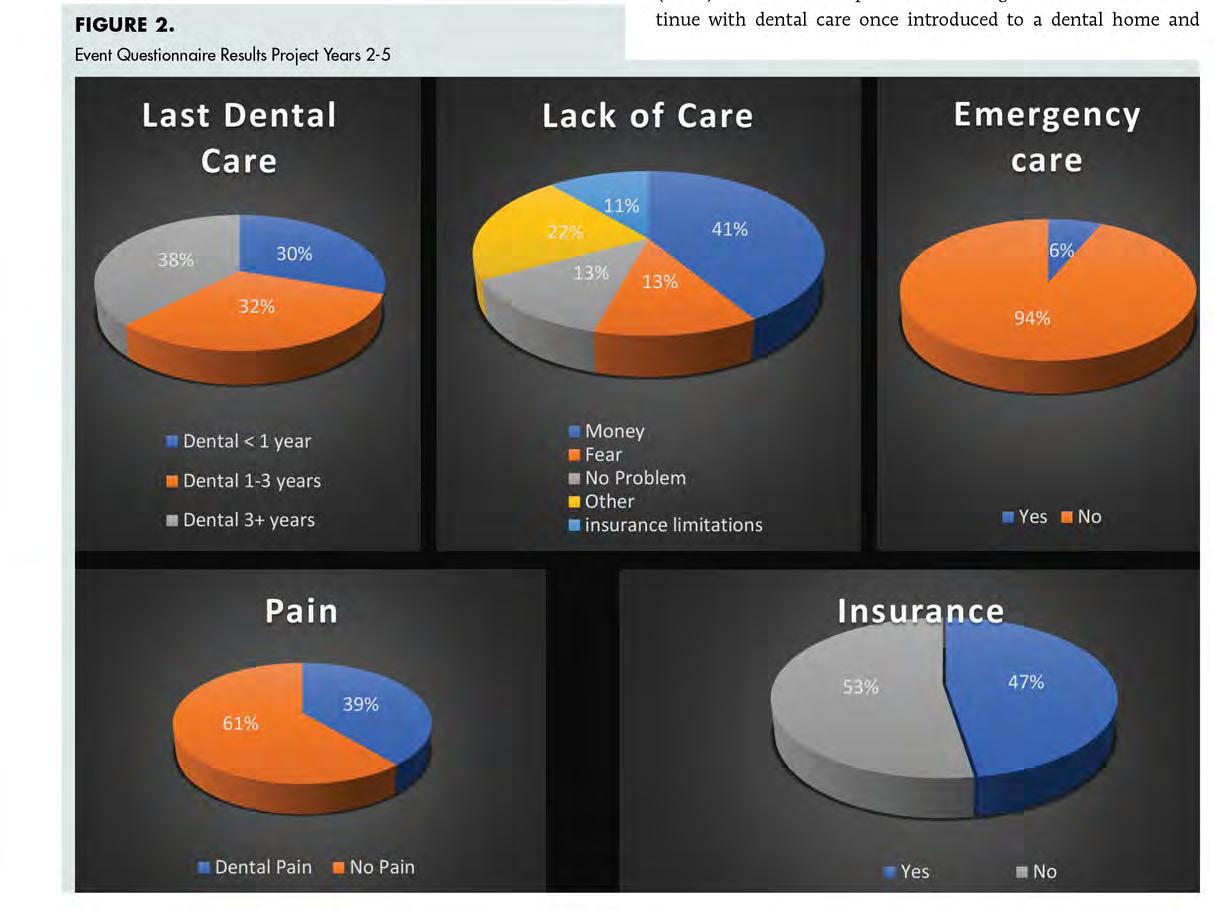

The primary objective of the Dental Demonstration Project (DDP) is to evaluate if patients attending the events would con tinue with dental care once introduced to a dental home and
guided resources. At the conclusion of the five-year program, a total of 1,738 patients had been seen. The total number of pa tients who had a subsequent visit was 558 (32.11% overall). This seems promising in that approximately a third of the patients fol lowed up at least once to a dental care facility after, in a number of cases, not having visited a dentist for many years.
Whether this turns into routine care remains to be seen. The authors propose that the percentage of patients who re turned for at least one visit is a good indicator that these pa tients were comfortable with the original free day of care and had established some level of trust in the facility. Their next visit required patients to utilize insurance or pay out of pocket, usu ally at a sliding-fee scale. Future studies could evaluate whether patients attending events continued to receive care and for how many visits and years.
Through personal observation, the authors also thought there were more favorable outcomes at facilities that had staff who cooperated with the goals and objectives of the DDP. Suc cess was achieved at facilities that actively participated in the treatment, the dental education and were enthusiastic when scheduling follow-up appointments. These facilities used many of their own dental assistants and clerical staff to assist the vol
unteer dentists and hygienists during the free day of care. In many cases, the staff understood the importance of making the new patients feel comfortable at their facility and realized they needed these outreach events for continued success with their organization’s mission.
Eliminating that barrier on the first visit was an important aspect, and the facilities that took part in the events were very successful in recruiting new patients for the free visit. Many of the patients expressed gratitude for the care they received, and a large portion of the volunteer providers were invigorated and felt fulfilled from the experience. This was evident from the num ber of times many providers (approximately 25) participated in multiple events, some of whom traveled many miles around New York State to reach the site of the event.
Studies have shown that people who receive routine dental care, instead of episodic or no dental care, have better oral health.[13] Patients who never come to the dental office or who only come when in need of emergent care can end up receiving more com plicated and expensive work. Teeth that could have been repaired with direct restorations now need to be removed or restored with root canals and crowns. Patients with long-term periodontal dis ease end up losing teeth instead of receiving periodontal therapy.

These patients then must turn to more complicated removable, implant and/or fixed dental prostheses. It is encouraging to see new patients return to a healthcare facility for follow-up care af ter an initial visit.
The goal of the DDP is twofold: to promote volunteerism in organized dentistry and to identify and engage underserved communities across New York State. By offering a free dental day, regardless of insurance or out-of-pocket expense, events at tract the population most in need. Additionally, patients who attend are linked to community resources while improving their oral health literacy.
Thirty-five percent of patients surveyed at the DDP events cited “no perceived dental problem” or “other” as a reason not to seek regular dental care. For this project, that translates to 332 opportu nities to reduce spending and improve health outcomes through oral health disease prevention and referral to public health resources.
With the integration of a new workforce model, community dental health coordination (CDHC), in project year six and be yond, future DDP events will incorporate additional strategies to increase health literacy, insurance utilization and access to a den tal/health home, thereby reducing the burden of dental disease.
A five-year demonstration was completed to evaluate the effect access to free dental care would have on new patients treated in an FQHC or Article 28 facility in underserved communi ties throughout New York State. A 2015 study showed that although fewer adult patients are routinely visiting a dentist, patient volume at FQHC dental clinics around the country is increasing. [14] By partnering with these facilities to host a free day of dentistry while providing personalized dental education, facilitated insurance enrollment and consistency in staffing, there was a positive impact on the likelihood that patients would return to the host facility for care. The project demon strated that approximately 32% of new patients returned to that clinic for at least one visit. Future involvement with com munity dental health coordination will assist with improving the oral health outcomes of these patients.
In-person events have been limited due to the COVID-19 pandemic; however, the authors recommend further funding to study this area in New York State and around the country.
1. The Oral Health Questionnaire was not allowed to be used at the University of Buffalo during years four and five and at the Seneca Babcock event due to the inability to receive timely Institutional Review Board approval.
2. Although patients returned for a follow-up visit, data could not be obtained at this time on whether the patient stayed in that facility for a longer period of time.
3. The facilities that volunteered differed in many ways. Some were much larger than others and used different workflows for appointment making and follow-up care. At times, pa tients came from over an hour away for the free care and indicated a reluctance to come back for follow-up care.
4. Data could not be obtained for follow-up visits at three events. p
The authors thank the federally qualified healthcare centers and Article 28 facilities for their participation in the Dental Demonstration Project events, and they acknowledge the contributions of the volunteer dentists, hygienists and staff members who participated in the provision of patient care. Queries about this article can be addressed to Dr. Dowd at drrndowd@gamail.com or Ms. Bray at bbray@nysdental.org.
1. Guay A. Access to dental care. Solving the problem for underserved populations. JADA 2004;135:1599-1605.
2. Wall T. Recent trends in dental emergency department visits in the United States –1997/1998 to 2007/2008. J Public Health Dent April 2012.
3. Owens PL, Mansi R, Weiss Audrey Weiss. Healthcare Cost and Utilization Project; Emer gency Department Visits Involving Dental Conditions, 2018; Statistical Brief #280.
4. Gupta N, Vujac M. Main Barriers to Getting Needed Dental Care All Relate to Affordability. Health Policy Institute, American Dental Association. November 2019.
5. Cost Barriers to Dental Care in the US; American Dental Association Health Policy Insti tute: Based on HPI analysis of 2000-2016 National Health Interview Survey data; November 2017; Infographic.
6. Manski R, Cooper PF. Characteristics of employers offering dental coverage in the United States. JADA 2010; 141(6):700-711.
7. Vujicic M. A tale of two safety nets. ADA Health Policy Institute. JADA January 2014;145(1): 83-85.
8. Yarbrough C, Vujicic M. Oral health trends for older Americans. JADA 2019;150(8):714-716.


9. Oral Health in America: Advances and Challenges; Executive Summary. National Institute of Dental and Craniofacial Research December 2021;P. 8.
10. Seiber EE, Mariotti A. Differences in use of dental and medical services by noninstitutional ized children in Ohio. JADA 2011;142(3):302-308.
11. Rozier RG, White BA. Wang M. Development and testing of a patient-centered dental home assessment for low-income families. J Public Health Dent June 2019.
12. Definition of a Dental Home; Latest Revision. American Academy of Pediatric Dentistry 2018.
13. Crocombe LA, Brennan DS, Slade GD. The influence of the volume of dental treatment on change in self-reported oral health. J Public Health Dent 2012;73(1):1.
14. Vujicic M. Where Have all of the dental care visits gone? JADA 2015;146(6):412-414.
Brendan Dowd, D.D.S., is clinical assistant professor, University at Buffalo School of Dental Medicine, Buffalo, NY.Amelogenesis imperfecta (AI) describes a group of genetic conditions affecting the thickness, microstructure and degree of mineralization of the enamel. Correct diagnosis may be important for managing other serious medical conditions. AI patients are highly susceptible to caries, pain, tooth wear and loss of the vertical dimension of occlusion, often requiring significant dental treatment throughout their lives. Early diagnosis and timely preventative and restorative treatments are crucial to circum venting AI’s psychological, social and functional sequalae. This case series highlights AI in a 19-yearold patient, with suggestions for further testing and monitoring of the condition.
Amelogenesis imperfecta (AI) describes a group of genetic condi tions affecting the thickness, microstructure and degree of min eralization of the enamel. It is traditionally defined as a group of hereditary enamel developmental disorders occurring in isolation of other medical problems or systemic conditions.[1-3]
AI’s mode of inheritance can be autosomal recessive, autoso mal dominant, x-linked[4-6] or by sporadic gene mutation.[4,5] A number of studies have measured its prevalence across different populations, with reported frequencies ranging from 1:700 in Sweden[7] to 1:14,000 in the United States.[3] These studies were performed prior to the ability to diagnose AI by genetic testing,[2] which indicates that the actual prevalence is higher than report ed. It is now known that AI does not always occur as an isolated condition, but that AI patients may also present with co-segregat ing medical conditions such as nephrocalcinosis.[1,4,8]
During amelogenesis, enamel is created by ameloblasts. Am elogenesis has three primary stages: presecretory, secretory and maturation. In the presecretory stage, inner enamel epithelium cells are differentiated into ameloblasts. In the secretory stage, ameloblasts migrate away from the dentin-enamel junction and deposit an organic enamel matrix, which forms the full thickness of the enamel layer. In the maturation stage, water and organic molecules are removed from the enamel matrix and the enamel is completely mineralized.
Witkop classified four different phenotypes of AI: hypoplas tic, hypomaturation, hypocalcified and hypomaturation-hypo plastic with taurodontism.[9] Each phenotype corresponds to a particular stage of amelogenesis in which disruption occurs.[10] Newer classification systems, such as that proposed by Aldred et al. consider additional elements, such as mode of inheritance, as well as molecular and biochemical factors.[11]
Hypoplastic AI is the most common form of AI, comprising 70% of cases.[12] It occurs from a disruption in the secretory stage of amelogenesis, causing defects in enamel matrix deposition. In hy poplastic AI, the enamel layer is of reduced thickness but normal mineralization and radiodensity.[10] In extreme cases, the enamel may be altogether absent.[1] Hypoplastic AI produces visibly rough tooth surfaces with pits or area defects that range in color from yellow to light brown (Figure 1).[13]
Hypomaturation AI and hypocalcified AI are both considered forms of hypomineralized AI, in which defects occur during the maturation stage of amelogenesis. The resulting enamel has nor mal thickness but reduced mineralization.


Hypomaturation AI is often undiagnosed and is the mild est form of AI, [13] caused by incomplete protein degradation from the enamel matrix. The resulting enamel is brittle[1] and appears mottled, but is of normal thickness[10] and has a simi lar radiopacity to the dentin.[10] Although this enamel is prone to wear, it is to a lesser degree than occurs with hypocalcified AI. [10] The clinical presentation of hypomaturation AI can be confused with erosion, resulting in the genetic condition going undiagnosed. Patients with generalized erosion in a non-spe cific pattern should be further evaluated with genetic studies (Figure 2).

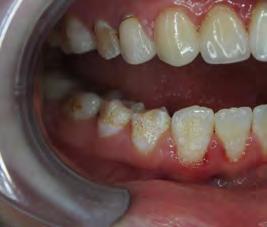


Hypocalcified AI is the severest form of AI,[13] occurring when the enamel fails to mineralize during the maturation stage. Hypocalcified AI results in soft, weak enamel[1] that causes teeth to stain and break down rapidly, often being very sensitive to temperature, chewing and brushing.[13] Such enamel is less ra diodense than the dentin.[10]
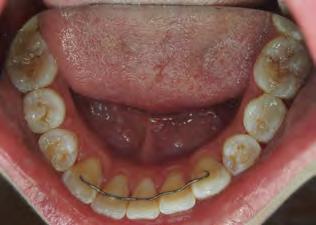
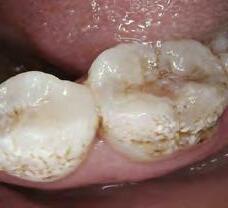

Hypomaturation–hypoplastic AI with taurodontism appears as a combination of the hypomaturation and hypoplastic AI phe notypes. Apart from the pathologic enamel, this AI phenotype causes teeth to present with long bodies and pulp chambers and short roots, with the furcation and floor of the pulp chamber located at an apical position on the root.
 Figure 1. Case study of 19-year-old female patient presenting with hypoplastic phenotypic amelogenesis imperfecta. (A) Photographs showing characteristic pitted and stained enamel.
Figure 1. Case study of 19-year-old female patient presenting with hypoplastic phenotypic amelogenesis imperfecta. (A) Photographs showing characteristic pitted and stained enamel.
AI is diagnosed based on family history, clinical and radiographic examination, and genetic testing.[4,10] As AI may present with other health problems, the diagnosis may be important in pre venting or managing other serious medical conditions. For ex ample, AI patients with mutations in the FAM20A gene may have nephrocalcinosis and should be referred to a renal specialist for evaluation.[1,8] Similarly, patients with mutations in the CNNM4 gene may have cone-rod dystrophy, an inherited condition.[14]
Included in AI’s differential diagnosis are other conditions of the enamel, such as fluorosis, tetracycline staining, trauma, enamel hypoplasia and molar incisor hypomineralization.[1,5,10,13]
AI is differentiated from these conditions in that it generally af fects all teeth uniformly across both the primary and secondary dentitions, and there is usually a family history.
AI patients are highly susceptible to dental caries, pain, tooth wear and associated loss of the vertical dimension of occlusion (VDO). Because of these factors, AI patients often require fre quent and significant dental treatment throughout their lives. Pathologic enamel results in compromised esthetics, and patients frequently seek treatment for their front teeth.[15]
AI is a chronic condition, and its management is expensive, time-consuming and psychologically burdensome for both pa tients and their families. AI patients suffer psychosocial stress related to their teeth’s appearance, bullying, dental pain and fre quent dental visits. This can lead to reduced quality of life, selfesteem and social acceptance.[16] Lundgren et al. reported that parents of patients with AI also suffer psychologically from their
(C) Full-mouth series showing thinning enamel and active dental caries. unfamiliarity with the condition, often fearing that their child will have to endure bullying, inadequate pain relief, incorrect treatment and emergency dental visits.[17] Parents may also suffer from guilt or shame in passing on a hereditary disease.

A 19-year-old female presented for a new patient exam and dental pro phylaxis. The patient had visited our office three years prior for a lim ited exam to address lower right discomfort. The patient did not take any medications and denied any medical conditions or drug allergies. Clinical examination showed pitted, bumpy enamel surfaces that were yellow and brown in color. The patient had a history of orthodontics, followed by maxillary ceramic veneers, in addition to other significant restorative work. Upon questioning, the patient mentioned that the veneers were performed mostly because of tooth sensitivity.
A panoramic radiograph was initially taken to evaluate third molars and to get a comprehensive view of the patient’s denti tion and dental history. A full-mouth series was subsequently taken following the panoramic X-ray to evaluate individual teeth at better clarity. Photographs were taken with patient’s permis sion (Figure 1). Clinically, significant decay was found, including profound decay on #4 mesial. Other teeth, including #4, #5 and #12, showed radiographic decay. Enamel irregularities were especially evident in the bitewing radiographs. Although the enamel was more radiopaque than the dentin, it showed reduced thick ness around the periphery. Based on the clinical and radiographic findings, it appeared that the patient had hypoplastic AI.

The patient was informed that she likely has AI, a genetic condition. The patient denied any family history of similar dental
 Figure 1. Case study of 19-year-old female patient presenting with hypoplastic phenotypic amelogenesis imperfecta.
Figure 1. Case study of 19-year-old female patient presenting with hypoplastic phenotypic amelogenesis imperfecta.
conditions. As she was moving within days, she could not com plete any of the needed treatment. Good oral hygiene was en forced during the visit, including a review of dietary habits, and a prescription for Prevident 5000 Plus toothpaste was called into the patient’s pharmacy. Radiographs were forwarded to the next treating dentist. With the patient’s permission, the findings were discussed with her pediatrician. Genetic evaluation was recom mended to confirm the diagnosis and the potential for transfer ring an inheritable genetic condition.

There is no “one-size-fits-all” treatment for AI. There is a lack of evidence-based clinical recommendations regarding which treatments are best for AI patients, and treatment options are still based primarily on case reports and case series.[12,13] The American Academy of Pediatric Dentistry (AAPD) has established guidelines for AI treatment which emphasize that the treatment should be patient-centered, multidisciplinary, and take into consideration the patient’s cosmetic, functional and emotional needs.[6] AI treatment may differ depending on whether the pa tient has primary, mixed or permanent dentition.
In the primary dentition, AI treatment focuses on allowing proper eruption of the permanent teeth and normal orofacial de velopment. Stainless steel crowns are recommended for primary molars to maintain the VDO and arch spacing.[18] Direct com posites or full-coverage crowns can be used to treat the primary anterior dentition.[6] Preventative care, including routine exams, allows early identification of teeth that require treatment upon eruption.[6] Fluoride and desensitizing treatments may allevi ate tooth sensitivity.[6] Goals in mixed dentition and permanent dentition (Figure 3) include maintaining or restoring the VDO, preventing or reducing tooth sensitivity, preserving pulpal vitality and addressing cosmetic concerns.[13,18] Orthodontics should be considered as part of a multidisciplinary approach; this is impor tant, as AI can present with anterior open bite, reverse curve of Spee, vertical growth pattern and constricted maxillary arch.[19,20] Patients with AI should have routine follow-up visits, and rigor ous oral hygiene should be stressed.
Varying levels of success have been achieved with traditional restorative treatments in AI patients. Amalgam is an inferior restorative material in patients with moderate or severe AI, as the weaker enamel margins and supporting tooth structure are prone to fracture. Seow found that glass ionomers and resin composites are better retained than amalgam in smaller restorations.[21] Rada and Hasiakos reported that direct compos ites may be compromised in AI patients due to an inadequate amount of enamel for bonding and/or an inferior enamel–dentin bond.[15]


In a case report involving AI, Toupenay et al.[13] placed a layer of flowable composite between the bonding agent and the packable composite on the facial surfaces of the primary anteriors, stating
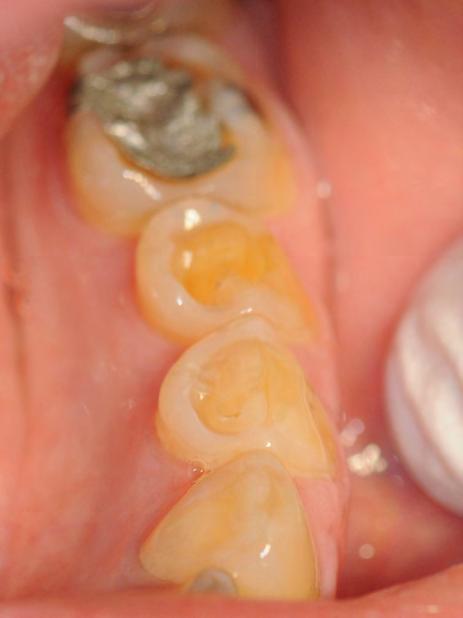 Figure 2. Hypomaturation amelogenesis imperfecta (AI) phenotype. Erosion with generalized non-specific pattern. Posterior teeth show classic signs of AI, such as significant wear and fracturing of facial enamel layer
Figure 2. Hypomaturation amelogenesis imperfecta (AI) phenotype. Erosion with generalized non-specific pattern. Posterior teeth show classic signs of AI, such as significant wear and fracturing of facial enamel layer
Figure 3. Hypoplastic amelogenesis imperfecta (AI) exhibiting pathological enamel fracture of anterior and posterior teeth. Almost presents as trauma; however, enamel has clearly split off at dentinenamel junction. Posterior teeth have very typical AI presentation of significant wear and enamel fracture.
Clinical photos of patients diagnosed with AI and confirmed genetically (Figures 2 and 3) were provided courtesy of Dr. Gwen Cohen-Brown at New York City College of Technology in the Dental Hygiene Department.

that the flowable composite’s low viscosity and high wettability likely increased its ability to penetrate rough enamel. A follow-up one year after treatment showed that the composites were still sealed.
In an evaluation of restorative treatments in AI patients, Ohrvik et al. found that all-ceramic bonded restorations yielded superior re sults to either direct composite restorations or prefabricated composite veneers.[12] A review by Strauch et al. concluded that indirect restora tions are preferred over direct restorations in patients with AI.[22]
Early diagnosis and timely preventative and restorative treat ments are crucial to circumvent AI’s adverse psychological, social and functional sequalae.[4,6,12,13] Moreover, addressing AI early in life may improve overall self-esteem in children and young adults.[18] For patients with severe AI, early treatment with permanent pros thetic restorations is recommended.[12] p
Queries about this article can be sent to Dr. Moshman at andrew.moshman@gmail.com.
1. Smith CEL, Poulter JA, Antanaviciute A, et al. Amelogenesis imperfecta; genes, proteins, and pathways. Front Physiol 2017;8:435. doi:10.3389/fphys.2017.00435.
2. Wright JT, Torain M, Long K, et al. Amelogenesis imperfecta: genotype-phenotype studies in 71 families. Cells Tissues Organs 2011;194(2-4):279-283. doi:10.1159/000324339.
3. Witkop CJ. Hereditary defects in enamel and dentin. Acta Genet Stat Med 1957;7(1):236239. doi:10.1159/000150974.
4. Ceyhan D, Kirzioglu Z, Emek T. A long-term clinical study on individuals with amelogenesis imperfecta. Niger J Clin Pract 2019;22(8):1157-1162. doi:10.4103/njcp.njcp_227_18.
5. Crawford PJ, Aldred M, Bloch-Zupan A. Amelogenesis imperfecta. Orphanet J Rare Dis 2007;2:17. doi:10.1186/1750-1172-2-17.
6. American Academy of Pediatric Dentistry. Guideline on oral health care/dental manage ment of heritable dental developmental anomalies. Pediatr Dent 2009;30:196-201.
7. Bäckman B, Holm AK. Amelogenesis imperfecta: prevalence and incidence in a northern Swedish coun ty. Community Dent Oral Epidemiol 1986;14(1):43-47. doi:10.1111/j.1600-0528.1986.tb01493.x.
8. Koruyucu M, Seymen F, Gencay G, et al. Nephrocalcinosis in amelogenesis imperfecta caused by the FAM20A mutation. Nephron 2018;139(2):189-196. doi:10.1159/000486607.
9. Witkop CJ Jr. Amelogenesis imperfecta, dentinogenesis imperfecta and dentin dysplasia revisited: problems in classification. J Oral Pathol 1988;17(9-10):547-53. doi: 10.1111/ j.1600-0714.1988.tb01332.x. PMID: 3150442.

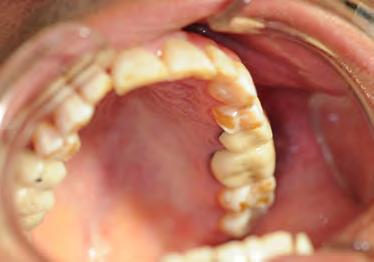


10. Gadhia K, McDonald S, Arkutu N, Malik K. Amelogenesis imperfecta: an introduction. Br Dent J 2012;212(8):377-379. doi:10.1038/sj.bdj.2012.314.
11. Aldred MJ, Savarirayan R, Crawford PJ. Amelogenesis imperfecta: a classification and catalogue for the 21st century. OralDis2003;9(1):19-23.doi:10.1034/j.1601-0825.2003.00843.x.
12. Ohrvik HG, Hjortsjö C. Retrospective study of patients with amelogenesis imperfecta treated with different bonded restoration techniques. Clin Exp Dent Res 2020;6(1):16-23. doi:10.1002/cre2.243.
13. Toupenay S, Fournier BP, Manière MC, Ifi-Naulin C, Berdal A, de La Dure-Molla M. Amelo genesis imperfecta: therapeutic strategy from primary to permanent dentition across case reports. BMC Oral Health 2018;18(1):108. doi:10.1186/s12903-018-0554-y.
14. Polok B, Escher P, Ambresin A, et al. Mutations in CNNM4 cause recessive cone-rod dystrophy with amelogenesis imperfecta. Am J Hum Genet 2009;84(2):259-265. doi:10.1016/j.ajhg.2009.01.006.
15. Rada RE, Hasiakos PS. Current treatment modalities in the conservative restoration of am elogenesis imperfecta: a case report. Quintessence International 1990;21(12):937-942.
16. Coffield KD, Phillips C, Brady M, Roberts MW, Strauss RP, Wright JT. The psychosocial impact of developmental dental defects in people with hereditary amelogenesis imperfecta. J Am Dent Assoc 2005;136(5):620-30. doi:10.14219/jada.archive.2005.0233.
17. Pousette Lundgren G, Hasselblad T, Johansson AS, Johansson A, Dahllöf G. Experiences of being a parent to a child with amelogenesis imperfecta. Dent J (Basel) 2019;7(1):17. doi:10.3390/dj7010017.
18. Chen CF, Hu JC, Bresciani E, Peters MC, Estrella MR. Treatment considerations for patient with am elogenesis imperfecta: a review. Braz Dent Sci 2013;16(4):7-18. doi:10.14295/bds.2013.v16i4.904.

19. Hoppenreijs TJM, Voorsmit RACA, Freihofer HPM. Open bite deformity in amelogenesis im perfecta Part 1: an analysis of contributory factors and implications for treatment. Journal of Cranio-Maxillofacial Surgery 1998;26(4):260-266. doi:10.1016/S1010-5182(98)80023-1.
20. Khodaeian N, Sabouhi M, Ataei E. An interdisciplinary approach for rehabilitat ing a patient with amelogenesis imperfecta: a case report. Case Rep Dent 2012;1-8. doi:10.1155/2012/432108.
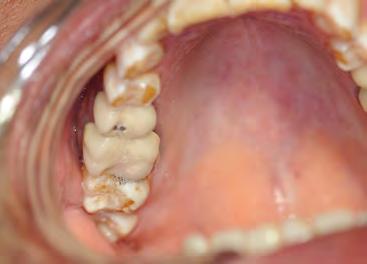
21. Seow WK. Clinical diagnosis and management strategies of amelogenesis imperfectavari ants. Pediatr Dent 1993;15(6):384-393.
22. Strauch S, Hahnel S. Restorative treatment in patients with amelogenesis imperfecta: A Review. J Prosthodont 2018;27(7):618-623. doi:10.1111/jopr.12736.
Andrew T. Moshman, D.M.D., is adjunct assistant professor, New York City College of Technol ogy, Brooklyn, NY. Gwen Cohen-Brown, D.D.S, FAAOMP, is professor, New York City College of Technology, Brooklyn, NY. Dr. Cohen-Brown Dr. Moshman


 Brendan Dowd Second District Trustee
Brendan Dowd Second District Trustee
THE AMERICAN DENTAL ASSOCIATION welcomed its 159th president in Oc tober when it installed George R. Shepley, D.D.S., of Baltimore, MD, as the Association’s top elected official. Dr. Shepley’s installation took place at the conclusion of the ADA’s Annual Meeting, SmileCon, in Houston, TX.

At that meeting, the ADA also installed its new president-elect, Linda J. Edgar, D.D.S., M.E.D., of Federal Way, WA, Second Vice President David J. Manzanares, D.D.S., of Albuquerque, NM, and Speaker W. Mark Donald, D.M.D., of Louisville, MS, as well as four new trustees, among them, Brendan P. Dowd, D.D.S., of Buf falo, who will represent the Second Trustee District (New York State).
A life member of the ADA, Dr. Shepley has held numerous positions with the ADA, among them, 4th District Trustee, chair of the Council on Com munications, chair of the Budget and Finance Committee and chair of the Committee on Annual Meetings. He also served two terms on the State Pub lic Affairs Oversight Committee. He is a past president of the Maryland State Dental Association and a member of the Academy of General Dentistry. He is a fellow of the American College of Dentists, International College of Dentists and Pierre Fauchard Academy.
Dr. Shepley received his dental degree from West Virginia University School of Dentistry in 1977 and has practiced dentistry in Baltimore since 1978.
President-Elect is Former
Delegates to the ADA HOD elected Linda J. Edgar of Washington state presidentelect of the Association, putting her in line to become president in 2023. Dr. Edgar bested her opponent, Paul R. Leary, D.D.S., of the Second District.

Dr. Edgar was the 11th District Trustee of the ADA and served on the ADA Council on Dental Practice. She is a past president and past secretary of the Academy of General Dentistry, past president of the Seattle King County Dental Society and fellow of the American College of Dentists, International College of Dentists and Academy of Dentistry International.
Dr. Edgar has practiced general dentistry with her husband, Dr. Bryan Ed gar, for 30 years and has been a major fundraiser for the University of Wash ington School of Dentistry for more than 10 years. Prior to becoming a dentist, she was a teacher for 15 years.
The Second District’s new trustee, Dr. Brendan Dowd, is a retired general den tist. He served as assistant dean of clinical operations at the University at Buf falo School of Dental Medicine and is currently a part-time clinical assistant professor. He is a past president of NYSDA and the Eighth District Dental So ciety and served on the ADA Council on Dental Practice.
Targeted topical therapy offers promise as at-home treatment.
A TOPICAL GEL that blocks the receptor for a metabolic byproduct called succinate treats periodontal disease by suppressing inflamma tion and changing the makeup of bacteria in the mouth, according to a new study led by researchers at NYU College of Dentistry and published in Cell Reports.
The research, conducted in mice and using human cells and plaque samples, lays the groundwork for a non-invasive treatment for periodontal disease that people could apply to the gums at home to prevent or treat disease.
Periodontal disease is one of the most prevalent inflammatory diseases, affecting nearly half of adults 30 and older. It is marked by three components: inflammation, an imbalance of unhealthy and healthy bacteria in the mouth, and destruction of the bones and struc tures that support the teeth.
“No current treatment for periodontal disease simultaneously reduces inflammation, limits disruption to the oral microbiome and prevents bone loss. There is an urgent public health need for more targeted and effective treatments for this common disease,” said Yuqi Guo, an associate research scientist in the Department of Molecular Pathobiology at NYU Dentistry and the study’s co-first author.
Past research has linked increased succinate—a molecule pro duced during metabolism—to periodontal disease, with higher suc cinate levels associated with higher levels of inflammation. Guo and her colleagues at the College of Dentistry also discovered in 2017 that elevated levels of succinate activate the succinate receptor and stimulate bone loss. These findings made the succinate receptor an appealing target for countering inflammation and bone loss—and, potentially, stopping periodontal disease in its tracks.
The researchers started by examining dental plaque samples from hu mans and plasma samples from mice. Using metabolomic analyses, they found higher succinate levels in people and mice with periodon tal disease compared to those with healthy gums, confirming what previous studies have found.
They also saw that the succinate receptor was expressed in hu man and mouse gums. To test the connection between the succinate receptor and the components of periodontal disease, they genetically altered mice to inactivate, or “knock out,” the succinate receptor.
In “knockout” mice with periodontal disease, the researchers measured lower levels of inflammation in both the gum tissue and blood, as well as less bone loss. They also found different bacteria in their mouths: mice with periodontal disease had a greater imbalance of bacteria than did “knockout” mice.
This held true when the researchers administered extra succinate to both types of mice, which worsened periodontal disease in normal mice; however, “knockout” mice were protected against inflamma tion, increases in unhealthy bacteria and bone loss.
“Mice without active succinate receptors were more resilient to disease,” said Fangxi Xu, an assistant research scientist in the Depart ment of Molecular Pathobiology at NYU Dentistry and the study’s cofirst author. “While we already knew that there was some connection between succinate and periodontal disease, we now have stronger evidence that elevated succinate and the succinate receptor are ma jor drivers of the disease.”
To see if blocking the succinate receptor could ameliorate periodontal disease, the researchers developed a gel formulation of a small com pound that targets the succinate receptor and prevents it from being activated. In laboratory studies of human gum cells, the compound reduced inflammation and processes that lead to bone loss.
The compound was then applied as a topical gel to the gums of mice with periodontal disease, which reduced local and systemic inflammation and bone loss in a matter of days. In one test, the re searchers applied the gel to the gums of mice with disease every other day for four weeks, which cut their bone loss in half compared to mice that did not receive the gel.
Mice treated with the gel also had significant changes to the com munity of bacteria in their mouths. Notably, bacteria in the Bacteroidetes family—which include pathogens that are known to be dominant in peri odontal disease—were depleted in those treated with the gel.
“We conducted additional tests to see if the compound itself acted as an antibiotic, and found that it does not directly affect the growth of bacteria. This suggests that the gel changes the community of bacteria through regulating inflammation,” said Deepak Saxena, professor at NYU Dentistry and the study’s co-senior author.
The researchers are continuing to study the gel in animal models to find the appropriate dosage and timing for application, as well as determine any toxicity. Their long-term goal is to develop a gel and oral strip that can be used at home by people with or at risk for peri odontal disease, as well as a stronger, slow-release formulation that dentists can apply to pockets that form in the gums during disease.
Additional study authors include Scott Thomas, Yanli Zhang, Bidisha Paul, Sungpil Chae, Patty Li, Caleb Almeter, and Angela Ka mer of NYU College of Dentistry; Satish Sakilam and Paramjit Arora of NYU Department of Chemistry; and Dana Graves of the University of Pennsylvania School of Dental Medicine.


The Eighth District presented a defensive driving course Oct. 5 at the district office. Twenty-four members and guests listened as Ray Ammerman discussed how to stay safe on the highways. Ray is a long-time employee of the West Herr Auto Group and now teaches safe driving through his com pany, The Safe Driver Academy.
During this four-hour course, he dis cussed various ways a driver can get into trouble and how to avoid these situations. Using humor to illustrate his points, he kept the class involved through the entire four hours. Once we graduated (yes, I was one of his pupils), we earned a 10% reduc tion in our car insurance over the next three years and a reduction of up to four points on our licenses if we had any. The class was informative and fun, and I heart ily recommend it.
The Eighth District’s New Dentist Com mittee hosted a New Dentist Social Oct. 20 at Spare Lanes in Buffalo. It featured a night of bowling and mingling with other new dentists, officers of the district and sea soned members of the tripartite. In addition to bowling, the group played bubble hockey and other “old school” video games, and enjoyed refreshments. And the new dentists had a chance to learn the ins and outs of dentistry from more experienced dentists.
The Erie County Dental Society sponsored “Basic Life Support for Health Care Pro viders” on Nov. 7. Presented by The Safety Company, this course fulfilled the New
York State course requirement for CPR re training. Participants completed both a skills and written test for certification. They also earned 4 MCE credits.
Dr. Anthony Cuomo, president-elect of NYSDA, visited the Eighth District, attend ing the district’s Executive Council meeting Nov. 8. Dr. Cuomo discussed his vision for his presidential year and what he would like to see happening at NYSDA and in orga nized dentistry. He was very informative and warmly welcomed by the council. We look forward to his ascending to the presi dency at the 2023 NYSDA House of Del egates Meeting and wish him all the best in the coming year.
The UB Dental Alumni Association held its annual Greater Niagara Dental Meeting from Nov. 2-4 at the Erie County Conven tion Center in downtown Buffalo. Attend ees could earn up to 15 MCE hours over the two and a half days of the meeting. The topics covered all aspects of dentistry, so there were classes for everyone.
Thursday evening the “Remember When” reception was held in the Hyatt Regency Sungarden for all the five-year reunion classes of UB School of Dental Medicine and their guests. Friday evening, the Hyatt Ballroom served as the venue for the reunion dinner dance for five-year classes. Honored at the dinner was Dr. Jo seph Zambon, former dean of UB School of Dental Medicine and a member of the Class of 1974, who received the Alumni’s Honor Award, its highest award. The award is given to an individual whose enthusi astic and untiring endeavors have helped to promote the continued growth, devel
opment and success of the UB School of Dental Medicine.
The association’s Distinguished Service Award was presented to Dr. Larry Volland, Class of 1975, given in recognition of out standing dedication, commitment and sup port of the UB School of Dental Medicine and the Alumni Association.
The 2022 Dr. Rick Fink Memorial Lecture, the district’s all-day fall seminar, will take place from 8 a.m.-4 p.m. Friday, Dec. 2, at the Grapevine Banquet Center in Depew. Dr. Susan McMahon will discuss “The Next Dimension: Cosmetics, Digital Dentistry, CBCT, 3D Printers, and More. How Den tists Thrive Today.” The course will review new restorative materials and indications, give step-by-step procedures for best out come esthetic restorations, review current technology options and assist with making rational purchases to increase production and relieve stress by implementing simple solutions to procedures.
On Saturday, Dec. 3, from 10 a.m. to noon, the Eighth District will hold its annual Children’s Christmas party at Transit Val ley Country Club in East Amherst. There will be magical entertainment, crafts, and Santa is scheduled to make an appearance with gifts for all the children present. This is always a wonderful affair and is eagerly anticipated by all.
Janice Pliszczak, D.D.S., M.S., M.B.A.
The Fifth District held its annual Speed Dat ing event Sept. 14 at the Brae Loch Inn in Cazenovia. The approximately 15 dentists and 15 residents in attendance had short discussions about potential employment opportunities. Thank you to our sponsors that included DDSmatch, Hudson Transi tion Partners, Henry Schein, M&T Bank, Prudential Financial, Walsh Duffield Com panies and Sinopoli & Sinopoli CPAs.
The Onondaga County Dental Society held a golf tournament and fishing outing this summer. The golf tournament was orga nized by Dr. Jeff Maloff and was held at Drumlins Country Club. The winner of the best ball was Dr. Natalya Levin’s team. The second-place team was composed of Drs. Paul Edwards, Scott Powers, AJ Goss and Jeff Maloff. A dinner followed the tournament and some non-golfers joined the group for a fun evening. Drs. Tim and Casey Fallon plan to run next year’s tournament.
On board for the fishing outing were Drs. Vince Campanino, Matt Fiorentino, John Conroy, Jeff Maloff and guest Steve Goldberg. The charter boat left out of Hen derson Harbor on Lake Ontario. Most of the fish caught were small mouth bass. Dr. Campanino reeled in a 20-inch, 7-pound small mouth bass that almost pulled him off the boat!

We have released our 2023 course calen dar. On Friday, Jan. 27, Dr. Miles R. Cone will be speaking on “Exposed: The Art and Science of Emotive Clinical and Laboratory Dental Photography & Squid vs. Whale: Surviving the Epic Struggle Between Clini cian and Technician” at the Embassy Suites by Hilton by Destiny USA in Syracuse.
On May 5, Dr. Carla Cohn will be speaking on “What’s New in Pediatric
Dentistry for the General Practitioner: The Cutting Edge” at Hampton Inn & Suites in Cazenovia.
On Nov. 17, Dr. Sam Shamardi will be speaking on “Establish Your Founda tion: Surgical Extractions with Simultane ous Bone Grafting & No More Crowning Around: Mastering Crown Lengthening” at the Embassy Suites by Hilton by Destiny USA in Syracuse.
The Ninth District’s fall courses have be gun. The speakers are determining whether
their courses will be held in person at the Ninth District headquarters in Hawthorne, or presented via Zoom. We would like to know everyone’s preference.
Our CPR courses continue to be of fered in two stages by the American Heart Association: an online module, followed by an in-person skills assessment at the Bly thedale Children’s Hospital in Valhalla.
Our general meetings remain in-per son. We are happy to report that atten dance is just about the same as it was before the pandemic.
Our upcoming Annual Meeting will be held on Nov. 16 at the Westchester Country Club in Rye. On top of a highly anticipated lecture, “RDIP: A Morpho-Therapeutic Ap proach to Predictable Implant Dentistry,” by Dr. Jonathan Esquivel, the 9th will be install ing its new Executive Committee for 2023.
The Ninth District continues to focus on strengthening and growing organized den tistry. Toward that end, on Sept. 7, the 9th hosted a virtual get-together with D3 & D4 Touro students with the theme “Network, Share & Learn.” The assembled 9th mem bers, Touro professors and a local residency director provided a glimpse into their expe riences and insights.
On Sept. 20, we kept the momentum going with our annual New Dentist Recep tion at Saltaire Oyster Bar in Port Chester. This event has become a go-to for new den tists to come together with more experienced members in a comfortable and relaxed set ting, to discuss triumphs and challenges as they navigate the business of dentistry.

We are happy to report that there was a terrific turnout for this year’s Give Kids A Smile events throughout the 9th District. The past few years have been difficult for all of us, but more so for underserved children in need of oral healthcare. This year, both the program at Touro and our visit to the Head Start program in New Rochelle were big successes.

Our study groups have returned to in-per son lectures, and many are back to their monthly schedules. Visit the 9th District website (www.ninthdistrict.org) and check out the “Calendar of Events” for the latest information and registration details. We invite you to get involved with colleagues and friends in a relaxed atmosphere, where we share experiences and get some CE cred its going.
Call the Ninth (914-747-1199) to get more information on study clubs near or convenient to you.
Our new slate of Executive Committee members will be welcomed at our upcom ing Annual Meeting as we look forward to 2023. As always, the committee and head quarters’ staff are ready, willing and able to help in any way we can. More impor tantly, we welcome your advice, thoughts
and concerns, so we can be sure all our members’ needs are met and voices heard. Remember, coming together is the begin ning; staying together is progress; working together is success!
Rochester welcomed new NYSDA Executive Director Greg Hill on Oct. 3. He met with Dr. Eli Eliav, director of the Eastman Insti tute for Oral Health (EIOH), vice president for Oral Health in the Office of the VP for Health Sciences and vice dean for oral
health at the University of Rochester, and received a tour of EIOH. On his drive to the Seventh District office, he stopped for a photo by a street sign with his name.
The district held a special dinner that evening at its office during the fall board meeting and hosted an informal meet and greet with Mr. Hill at Trata following the meeting.


Congratulations to Seventh District Den tal Society Board members Drs. Christo pher Calnon, Sean McLaren and Joseph Viola on their induction into the Interna tional College of Dentists. ICD is dedicated to recognizing professional achievements,
Volunteers

meritorious service and efforts towards progress in the profession. Drs. Calnon and Viola were inducted in person at the American Dental Association Annual Meeting, SmileCon, on Oct. 14 in Hous ton, TX. Dr. McLaren was inducted virtu ally.

Dr. Lyndon Cooper, dean at the Virginia Commonwealth University School of Den tistry, presented “Implants, Dentures, Tech nology, and Success” during the Monroe County Dental Society’s (MCDS) Annual Meeting on Sept, 16. Dr. Nathan Glasgow was recognized by the business chair for his dedication and service as president of MCDS for 2022.
A shoutout to our sponsors who sup ported the event: Benco Dental; Bonadent Dental Laboratories; DDSmatch; Genesee Regional Bank; Henry Schein; J&L Dental; Law Offices of Pullano & Farrow, PLLC; M&T Bank; Straumann; Urgent Dental Care; and Walsh Duffield.
The Seventh District hosted a hiring event on Sept. 15 at the Arbor Loft in Rochester. Private and group practice representatives looking to hire met speed-dating style with dental residents from the Eastman Institute for Oral Health and Rochester Regional Health and with new dentists.

Thank you to DDSmatch and Benco Dental for their sponsorship.
The Bronx County Dental Society congrat ulates Keith S. Margulis, D.D.S., M.P.H., FAAPD, on his appointment as president. Keith is the site director of dentistry at NYC Health + Hospitals/North Central Bronx and associate program director of the Advanced Education in Pediatric Den tistry program at Jacobi Medical Center. He is a diplomate of the American Board of Pediatric Dentistry and a fellow of the American Academy of Pediatric Dentistry, as well as serving as long-time examiner for the American Board of Pediatric Dentistry. He holds appointments to the attending staff at NYC Health + Hospitals/ Jacobi/ North Central Bronx, is a member of the NYS Office for People with Developmental Disabilities Task Force on Special Dentistry and a past chairperson. He has served on the NYSDA Council on Dental Education and Licensure and just completed a twoyear term as council chair.
Keith lives in Westchester with his wife, Ashley, and 5-year-old daughter, Em ery. In his spare time, he enjoys camping, scuba diving, geocaching and visiting Dis ney with his family.
On Nov. 15, Dr. Kathleen Schultz will pres ent a lecture entitled: “Tumors and Cysts in the Pediatric Patient.” Parents of children with oral pathologic conditions often ex press concern that the lesion may represent a tumor or an underlying systemic disease. Attendees will review common and uncom mon radiographic and clinical pathologies presenting as cysts and tumors in children, as well as the workup for establishing a di agnosis.
Dr. Schultz received her dental degree from the University of Connecticut School of Dental Medicine. She completed a resi dency in oral and maxillofacial pathology at Long Island Jewish Medical Center and a residency in pediatric dental medicine at Cohen Children’s Medical Center, Queens, where she served as chief resident in both
specialties. She is a fellow and a diplomate of the American Board of Oral and Maxil lofacial Pathology, as well as a diplomate of the American Board of Pediatric Dentistry.
As I write this, I am happy to report that our office renovation project has been com pleted. We are back conducting business as usual and having in-person courses in our new expanded lecture and boardroom. We almost doubled its size and added a dedi cated peer review exam room.
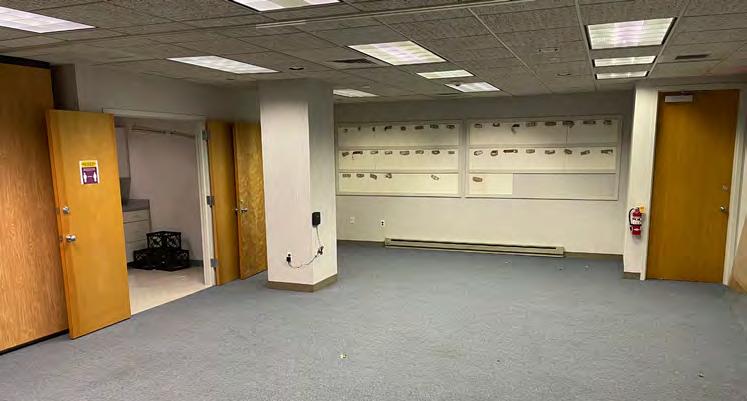
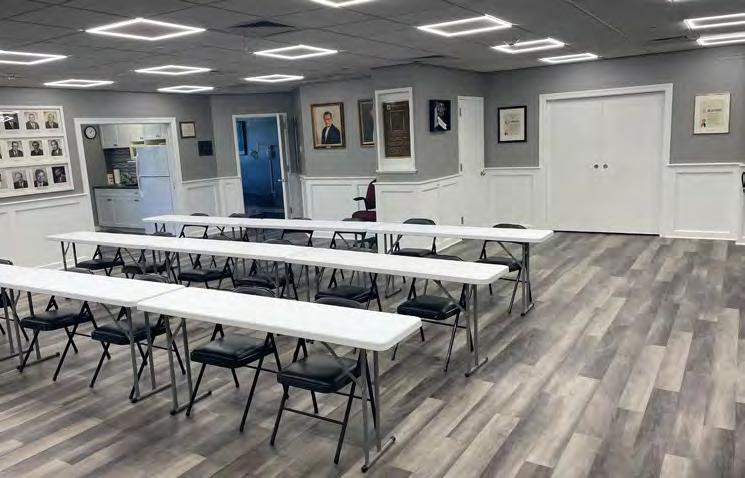
It wasn’t a smooth process, but the end result was worth the hassles.
We had our first in-person Board of Direc tors meeting in almost one and a half years on Sept. 12, and it was good to be back and not staring at everyone on a computer screen. That was followed by several wellattended in-person courses that had also been missing for the same amount of time.
On Oct. 3, we had one of our bestattended General Membership meetings, with over 190 registrants. It included din ner, a business session and an oral pathol ogy lecture by Dr. John Keene.
The following week, like many of you, it was off to Houston for the ADA HOD and SmileCon. Then, we did an oral cancer screening at the Great Neck Rotary Club on
Oct. 19, where we provided free checkups for 65 people. That was closely followed by our recycling and shredding event on Oct. 22. Members and nonmembers could bring their charts to be shredded and their X-ray

films and electronics to be recycled. It was a beautiful Saturday afternoon.
Our Long Island Women’s Dental Sympo sium, “Scrubs & Stilettos” took place Nov. 4 at the Heritage Club in partnership with the Suffolk County Dental Society. This is the 13th year of this award-winning pro gram. That was followed on Nov. 7 by our second fall General Membership Meeting. It included a lecture by Dr. Robert Kelsch.
The rest of 2022 is jammed-packed with courses and meetings. I should also men tion that on Dec. 1, we will be having the official dedication of our new boardroom, in memory of our dear friend, colleague, mentor, and leader, Dr. Mark Feldman. On that evening, a bronze plaque will be un veiled proclaiming the room the “Mark J. Feldman, DMD, Memorial Board Room.”
York County Dental Society partners, is very excited to host the 98th annual GNYDM live Nov. 25-30 at the Jacob Javits Center in New York City. The annual event is filled with fun and camaraderie, in-person edu cation and workshops, and hundreds of ex hibits for everyone to enjoy. Anything and everything dental-related will be on display.
As meeting-goers have come to expect, an extensive education program is being offered, starting with our Friday Morning Esthetics Program, continuing all week and including an exciting Wednesday af ternoon curriculum. Attendees will have their choice of world-renown clinicians to learn from. And the GNYDM will continue its tradition of hosting a variety of specialty meetings, including The World Implant Expo, The Global Orthodontic Conference, Pediatric Dentistry Summit and The Wom an Dentist Leadership Conference. These programs will be of interest to both special ist and general practitioner alike.
All of us at the Nassau County Dental Society hope all of you find the time to en joy the upcoming holiday season with your family and friends.
Alyson Buchalter, D.M.D.



The 2022 Greater New York Dental Meet ing (GNYDM) is imminent. The Second District Dental Society, along with our New
Over 350 live CE seminars and handson workshops are scheduled. As usual, registration, entry to the exhibit floor and many education opportunities are all free.
Volunteering is a great way to earn free CE. This year, volunteers are in for a treat as the Volunteer Appreciation Dinner (VAD) is returning. It will be a fun evening, socializing with friends and rejoining the GNYDM family. The famous VAD Raffle is making a comeback, with dozens of great prizes. Volunteers are key to the meeting’s successes, and the VAD is just one way for the GNYDM to say thank you! Interested
people can volunteer on the meeting web site, GNYDM.com.
The SDDS thanks the GNYDM Gener al Chairman, our own Dr. Richard Oshrain, and his entire committee for their very hard work and dedication to the meeting. They make it look easy, but we know how hard they work all year to make the GNYDM the preeminent dental meeting in the U.S.
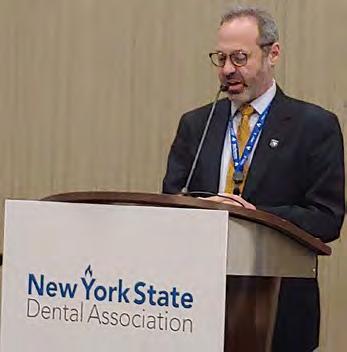
SDDS is proud to announce that over 200 dental residents have signed up to be mem bers of our tripartite. Brooklyn and Staten Is land are a hub of dental education. We work with these young dentists every year, show ing them how important membership is. We would like to acknowledge the residency pro grams and thank the program directors who helped to make this happen. They are: Dr. Irina Fuzaylova (Brookdale Univer sity); Dr. Ricardo Boyce (Brooklyn Hospi tal Center); Dr. Aristotle Lyssikatos (NYC
Health + Hospitals/Coney Island Hospi tal); Dr. James Fitzgerald (Interfaith Medi cal Center); Dr. Alfred C. Joseph (Kings County); Dr. Mark Drukartz (Kingsbrook Jewish Medical Center); Dr. Alvin D. Fried (Maimonides Medical Center); Dr. James Sconzo (New York-Presbyterian Brooklyn Methodist Hospital); Dr. Babak Bina (NYU Langone Hospitals); Dr. Deanna Barranco (Staten Island University Hospital); Dr. Beatrice C. Maritim (Brooklyn Veteran Af fairs); Dr. Steven Gounardes (Woodhull Hospital); and Dr. Karl Hoffman (Wyckoff Heights Medical Center).

Congratulations to our own Dr. Stuart Segel nick on his highly successful tenure as presi dent of the American Association of Dental Editors and Journalists (AADEJ). In addition, he did it again. For the third time in four years, Dr. Segelnick, editor of the SDDS Bulletin, has won the International College of Dentists
Division 2 Award for the September/October 2021 issue of the Bulletin. The award is given to the editor of an English language newslet ter for excellence in dental-related journalism. The SDDS is very proud of his accomplish ments and lucky to have him as our editor.

Also, congratulations to Dr. Alyson Buchalter on her appointment as the ADA Second Trustee District’s (NYSDA) repre sentative to the ADA Council on Dental Benefit Programs. Dr. Buchalter has been a member of the NYSDA Council on Den tal Benefit Programs for eight years and chairman of that council from June 2020 through June 2022. She also serves as chair of the SDDS Dental Benefits Committee.

The SDDS is always proud of its representa tives to the ADA House of Delegates (HOD) and this year was no exception. Six SDDS members were an intricate part of the ADA Second Trustee District (NYSDA) Caucus.
SDDS thanks Drs. Paul Albicocco, Alyson Buchalter, John Demas, Mitchell Mindlin, Craig Ratner and Paul Teplitsky for their leadership and active roles in helping to di rect the ADA’s future.
A special shout out to Dr. Mindlin, who served as chairman of the study group Leg islative, Health Governance & Related Mat ters. Its members helped guide the NYSDA caucus by clarifying the 16 resolutions they were tasked to consider. Study groups and their chairs are key to the effective func tioning of the NYSDA Caucus.
Dr. Alyson Buchalter, recently named NYSDA representative to ADA Council on Dental Benefit Programs. Dr. Stuart Segelnick, SDDS Editor, president American Association Dental Editors and Journalists. SDDS delegation to ADA HOD meeting in Houston includes, from left, Drs. John Demas, Mitchell Mindlin, Alyson Buchalter, Craig Ratner, Paul Teplitsky, Paul Albicocco. Dr. Mitchell Mindlin presents study group report to NYSDA Caucus in preparation for ADA House of Delegates meeting.This very popular program was repeated multiple times this fall. SDDS members have disposed of hundreds of pounds of office documents in a HIPAA-compliant manner. Though the program will be on hiatus until the spring, SDDS members are already saving boxes of charts and anything containing our patients’ private health in formation for safe and easy destruction.
Preparation for the 2023 Student Loan For giveness Program is underway. Applications will be available online Jan. 1. As a remind er, new dentists (completed residency with in past five years) practicing in Brooklyn or Staten Island are eligible for awards of up to $10,000. Eligibility details are available at SDDSNY.org.
Over the past seven years, under the chairmanship of Dr. Craig Ratner, the SDDS has repaid over $800,000 in student loan debt, proving once again, it pays to be an SDDS member!
 Suchie Chawla, D.D.S., M.D.
Suchie Chawla, D.D.S., M.D.
Members, eager to meet in person, put in a strong showing at the Sept. 12 General Membership Meeting. The energy in the room reflected the months (years!) since many had last seen their colleagues at NYCDS due to the pandemic.

Another compelling reason to attend was the lecture provided by Todd Hanna, M.D., D.D.S., FACS, and Nojan Bakhtiari, D.D.S., FAAOP, on “Botox in Dentistry: Applications for Facial Esthetics, TMJ and Headaches.” Their lecture was divided into two distinct segments, with Dr. Han
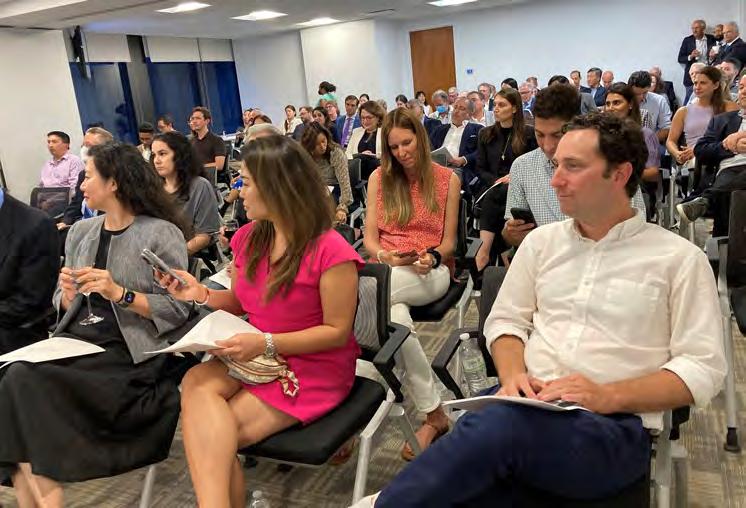
na addressing the aesthetic applications of Botox, specifically for dental offices, and Dr. Bakhtiari discussing Botox for TMD and pain relief. The speakers clearly captured the attention of their audience, and many attendees stayed to speak oneto-one with the lecturers after the formal program was over.
Dentists boarded a bus in Midtown Man hattan on Oct. 2 for a scenic drive to two Hudson Valley wineries. Once there, they enjoyed tasting different wines, apple cider donuts and a “deluxe” indoor picnic at a scenic winery overlooking the Hudson. The event, hosted by the New Dentist Com mittee, brought members, residents and students together for an enjoyable autumn outing.
Special thanks to MLMIC Insurance Co. for their sponsorship of this outing.
Representatives from New York County were invited by the NYU Student Govern ment Association to hold an information session for dental residents on Oct. 13 to discuss various aspects of applying for gen eral practice residency (GPR) or Advanced Education in General Dentistry (AEGD) programs. The dentists and residents on the panel shared their insights on how to inter view, how to write an impactful essay, when and where to apply, and much more. The panel provided diverse perspectives on the process. Nearly 100 students attended this highly informative event.
President-Elect Mina Kim arranged the Women Leaders Luncheon at the ADA House of Delegates on Oct. 16. The lunch was sponsored by the ADA, NYSDA, NYCDS and Second District Dental Society. The purpose of this luncheon was to em power women leaders, promote leadership and build community.
Last year, Dr. Kim organized an im promptu luncheon of women delegates and alternate delegates. It proved to be a great opportunity to network and dis
cuss resolutions and evolved into a contin ued exchange of ideas. When she decided to organize the lunch again, the response was overwhelming, with many other wom en asking to attend. There is clearly a strong need to have an event celebrating women colleagues, and we commend all who sup ported this effort.
Dr. Lois Jackson gave the keynote address. The lunch was extremely wellattended, with even more attendees than anticipated.

The 98th annual Greater New York Den tal Meeting, one of the largest dental con gresses in the world, is just days away! Set to open Nov. 25, the meeting runs through Nov. 30 at the Jacob K. Javits Convention Center, New York City. Exhibit dates are Nov. 27-30.

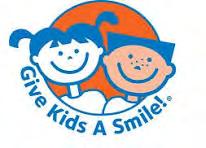
After two-years as a virtual event, Give Kids A Smile NYC 2023 will be held in-person at six school sites (reflecting participation of nine schools) in East Harlem. NYCDS will be promoting oral health awareness to 2,400 students and their families. In addi tion, a large number of students will receive dental screenings and fluoride treatment, provided by well over 100 volunteers. Dentists and their staff are encouraged to participate! Visit www.nycdentalsociety. org for more information and to sign up to volunteer.
The GNYDM will host unparalleled educational programs featuring highly re garded educators in the field of dentistry. Attendees can choose from among full-day seminars, half-day seminars and hands-on workshops that are sure to fascinate. There will be a greatly expanded World Implant Expo, Annual Global Orthodontic Confer ence, 3D Printing Conference, Oral Health Symposium, Pediatric Summit, Women’s Program, Public Health Program, Special Needs Courses and Dental Laboratory Education. Remember to have your staff members take advantage of the many edu cational opportunities available too.
Whether you participate as a volunteer or an attendee, we look forward to seeing you there! Visit www.gnydm.com to prereg ister for free today!
Readers of The New York State Dental Journal are invited to earn three (3) home study credits, approved by the New York State Dental Foundation, by properly answering 20 True or False questions, all of which are based on articles that appear in this issue.


To complete the questionnaire, log onto the site provided below. All of those who achieve a passing grade of at least 70% will receive verification of completion. Credits will automati cally be added to the CE Registry for NYSDA members.
For a complete listing of online lectures and home study CE courses sponsored by the New York State Dental Foundation, visit www.nysdentalfoundation.org/course-catalog.html.

Medications Associated with Oral Lichenoid Lesions Page 16-21
1. Oral lichenoid lesions (OLL) and oral lichen planus (OLP) have similar clinical presentations that are often indistin guishable.
❑ T or ❑ F
2. OLL and OLP do not ever present as a desquamative gingivitis.
❑ T or ❑ F
Visit our online portal for more....
Amelogenesis Imperfecta—Page 29-32
1. Amelogenesis imperfecta (AI) describes a group of genetic conditions affecting enamel.
❑ T or ❑ F
2. Correctly diagnosing AI is not important in managing a pa tient’s medical conditions.
❑ T or ❑ F
Visit our online portal for more....
BROOKLYN: State-of-the-art dental office for sale. Fantastic, rare opportunity. Fully equipped, wellestablished family practice with 3 ops, private office, reception area and large waiting room. Prime groundfloor location with street access in heart of Brooklyn in Park Slope/Kensington. Long-time building tenant with amenable property management. Contact for details: izdds@aol.com; or call: (516) 859-1463.
FINGER LAKES: Come live where others vaca tion. General practice for sale. 4-day workweek and no evenings or weekend hours. Referring out all spe cialty procedures. Reliable, long-term team with great systems in place. Up-to-date facility and equipment. Low overhead with little competition. Community has low cost of living with lots of outdoor recreational opportunities. Great place to raise family. Real estate available for purchase. Make an offer. Contact: dentalofficeforsale315@gmail.com.
UPSTATE: Charming, long-established, quality, general practice located in gorgeous upstate NY. Turnkey oppor tunity has it all. Revenue near $1M; low overhead; brand new equipment including 2 Belmont chairs, NV laser, Dentrix/Dexus technology throughout. Steady stream of new patients, robust hygiene department and prime location on busy main street. Seller refers out most specialty services providing additional revenue potential for buyer keeping these services in-house. Standalone 2,170-square-foot beautiful facility feels extra spacious with high ceilings and large windows. Four ops with room to expand 1 more if wanted. Additional 1,120 square feet of space has separate entrance and could be turned into dental lab, space for dental specialist or anything else. Plenty of onsite parking. Real estate for sale or lease. Flexible post-transition options avail able. Don’t miss this exceptional opportunity. Contact Catherine Etters at Legacy Practice Transitions for details: Catherine@LegacyPracticeTransitions.com; or (610) 520-9677.
BRONX: 32-year-old, well-running, beautifully renovated office for sale in Co-op City. 3 operatories, lab, sterilization room. Digital X-ray and computer. No Medicaid, DMO, HMO. Call (718) 862-9232; please leave message.
MIDTOWN MANHATTAN: Solo-doctor estab lished practice for sale in Midtown. Exceptional, welltrained and committed staff. FFS and PPO patients. 4 ops with each equipped with X-ray units and nitrous oxide. Strong hygiene program as well as restorative dentistry. Referring out endo, perio, oral surgery and ortho, leaving room for growth. Average gross $775K on 4 days. No brokers please. Contact for details: chisle3@aol.com.
MARTHA’S VINEYARD: Established in 1988, highly successful general & pediatric practice. Once-in-alifetime opportunity to live and work in island paradise. Fully equipped, state-of-the-art, digital and paperless.
Online Rates for 60-day posting of 150 words or less — can include photos/images online: Members: $200. Non-Members: $300. Corpo rate/Business Ads: $400. Classifieds will also appear in print during months when Journal is mailed: Jan, March and July.
Supported by dedicated, experienced staff, including administrator, dental assistant, hygienists and perio associates. Three operatories and room for expansion. Real estate available. Production over $1M annually, four days/week, 46 weeks/year; 25+ new patients/ month. Inquiries to: mvdentalsociety@gmail.com.
NORTHERN NEW YORK: Excellent general practice opportunity. Well-established family practice transitioning to retirement. Located minutes to Canada and short drive to Adirondacks. Family outdoor activi ties: water & snow skiing, Bassmaster’s fishing, hik ing, mountains and hunting. Successful privately owned practice; owned by current practicing dentist. Full sup port administrative staff, dental assistants and full-time hygienists. Pleasant working conditions, exceptional staff and many valued patients. Great opportunity for outdoor enthusiast with family to establish dental career with successful future. We will work beside you to help ensure success. Once-in-a-lifetime opportunity for new graduate or experienced dentist looking to take advan tage of great outdoors. We look forward to talking with you. Contact for more info: (315) 769-5811; email: frontoffice@drcarlscruggs.com.
UPSTATE: Great opportunity to practice in small com munity that brings in big revenue. A “steal” at $250K for practice and $100K for building with two rental apartments and large parking lot, with land to add on if needed. Perfectly dialed-in practice has wonderful equipment, new Pan, digital X-ray, updated computer system, excellent staff and big windows in each of 6 operatories. Revenue $645K on 4-day workweek. Contact for details. Email: cncnl@aol.com; or call (607) 768-3810.
MANHATTAN: Oral surgery practice for sale. Transition to ownership. Premier oral surgery practice with four ops with windows facing Central Park. Prime, exclusive condominium building on Central Park South. Established dentoalveolar surgery practice since 2001 with large patient base, complete medical equipment and website. Long-term lease of professional space of approximately 900 square feet included. Current oral surgeon retiring. Office-based practice includes dentoal veolar surgery, bone grafting, ridge augmentation, sinus floor augmentation, dental implants, wisdom teeth and IV general anesthesia. Work in pristine office in prime location. Tremendous growth potential. Contact: nycentralparksouth@gmail.com.
SYRACUSE/FAYETTEVILLE: Outstanding opportu nity to practice in safe park-like setting near major shop
ping center and medical complex (9,000+ daily traffic count). 5,268-square-foot single-story dental office on 1.63 acres in popular village of Fayetteville. Designed for healthy work and patient environment, with large outside deck overlooking trout stream and adjacent pond. 4-zone antiviral/antibacterial UV light HVAC sanitizing system, hardwood floors, vaulted ceilings and abundance of natural light. Former pediatric dental office with 11 private treatment rooms (9 with N2O/ O2 hookups and double sinks) and 6 open-bay chair hookups, all with compressed air and high-speed suction supplied by dual-suction pump and industrial grade com pressor. Four bathrooms, conference room, multi-station front desk, business offices, large reception area and staff breakroom with full kitchen. 30+ parking spaces. Ski slope with tubing hill, golf driving range, miniature golf and batting cages next door, plus walking distance to Green Lakes State Park. Excellent schools with numer ous recreation and family activities; beautiful lakes, riv ers and streams, golf courses, ski centers and cultural events. Area has 15 colleges within 90 minutes and 4 major hospitals and several regional medical centers in close proximity. Adjacent, level building lot (currently used as tennis courts) across stream for sale by different owner. Priced to sell at $699K. For more information, please call or text Davis Yohe at (315) 329-1328; or email: davis@C21bridgeway.com.
MIDTOWN MANHATTAN: Long-established FFS general practice for sale. Great Midtown location on Madison Ave. Updated office, 6 ops, fully computerized, digital X-rays. Grossing $1.1M. For more information email: hkalts@verizon.net.
FINGER LAKES: 3 locations. General dental practice for sale and worthy of look. With three locations across region, practice sees great number of patients with little competition. Current doctor open to all transition possibilities. Each location approximately an hour apart located in freestanding or office buildings. Additional real estate for two locations available for sale. Each location has at least four operatories, while one prac tice has 7 ops; for a total of 15 plumbed operatories. Collections $1.4M and EBITDA $140K. 3,000 active patients and over 40 new patients/month. To learn more, please contact Professional Transition Strategies by email: bailey@professionaltransition.com; or call: (719) 694-8320.
MANHATTAN: General practice for sale. Current doc tor enjoys seeing patients and would love to continue to practice for up to three years; interested in exploring all transition options including partnership, buy-out or affiliation with group. 2,600 active patients with very little marketing offering large opportunity for growth. 3 operatories with expansion option for 4th op. Collections $1.24M and SDE $342K. 100% FFS practice. To learn more, please contact Professional Transition Strategies by email: bailey@professionaltransition.com; or call: (719) 694-8320.
BROOKLYN: General practice for sale. From highrise views to fascinating outer borough museums, New
York City has it all. Practice supports multiple owner/ doctors and associates. Situated in desirable com munity in freestanding building with real estate also available. Currently, practice features six operatories with expansion opportunity available via build-out. Average 70 new patients/month with no marketing. Collections $1.22M and EBITDA $245K. To learn more, please contact Professional Transition Strategies by email: bailey@professionaltransition.com; or call: (719) 694-8320.
HUDSON VALLEY: New to market. Profitable peri odontal practice in heart of Hudson Valley. Current doc tor interested in partnering with another doctor or group and continuing to practice. Robust referral base pulls from several surrounding counties. Averaging 20-25 new patients/month without any advertising efforts. Currently equipped with 6 operatories and room for additional op. Additional growth and expansion easily possible as practice only open 4 days/week. Collections $2M million & EBITDA $518K. Doctor worked 165 days/year. Don’t miss incredible partnership oppor tunity. Contact Professional Transition Strategies to learn more: bailey@professionaltransition.com or call: (719) 694-8320. Now scheduling tours.
ALBANY COUNTY: Bethlehem. Growing commu nity close to downtown Albany on bus line; near major highways leading to NYC. Modern-feel office with four ops, Dentrix Ascend, Dexis, pan, Diode laser and more. Two full-time hygienists along with valued team working 4 days/week with systems in place and excellent col lection policies. No HMOs or state insurance. Excellent opportunity for any dental entrepreneur. For details contact Dental Practice Transitions Consultant Donna Bambrick by email: donna.bambrick@henryschein.com; or call: (315) 430-0643. #NY2712.
NASSAU COUNTY: Well-established general prac tice with focus on prosthetics and cosmetics located in standalone building in thriving community. 3 ops in 1,200 square feet, with room for expansion. Gross collections $2.2M. Strong full-time hygiene pro gram averaging 25 new patients/month. Dedicated and loyal staff. All equipment has been updated or replaced. Great opportunity with seller willing to stay for agreed-upon transition period. To find out more, contact Dental Practice Transitions Consultant Chris Regnier by phone: (631) 766-4501; or email: chris.regnier@henryschein.com. #NY2930
LIVERPOOL: Grads, make an offer. Located in north Syracuse, 6 ops with Pelton & Crane and one X-ray room with pan, Dexis, and ScanX. Insurance practice. Professional building with parking. Working 4 days per week. For details contact Dental Practice Transitions Consultant Donna Bambrick at (315)430-0643; or email: donna.bambrick@henryschein.com. #NY2887
CAPITAL DISTRICT: Historic brownstone with sixcar parking lot and ample street parking. Close access to highways. General dental practice on first floor with 3 rental units above. New windows throughout.
Three operatories equipped with Dentrix and digital X-rays. Grosses $500K on 4-day week. Very orga nized and meticulously clean. Walk-in ready prac tice can grow and flourish with little effort. Asking $348K for practice and $575K for building. For details contact Dental Practice Transitions Consultant Donna Bambrick at (315) 430-0643; or email: donna.bambrick@henryschein.com. #NY2900.
ERIE COUNTY: Located on busy road surrounded by established residential population and beautiful town. Three-op digital practice well-positioned for future growth with $307K gross revenue. Practice has crown & bridge, restorative and preventative focus. Some specialties referred out. Practice has strong patient base and mixed PPO. Real estate next to practice owned by seller and for sale with practice. To discuss, contact Dental Practice Transitions Consultant Brian Whalen at (716) 913-2632; or by email: brian.whalen@henryschein.com. #NY1648
HAMPTONS: Well-established FFS Endodontic practice. $432K in collections. Practice asking price $300K. 783-square-foot real estate asking price $500K. For details contact Dental Practice Transitions Consultant Chris Regnier at (631) 766-4501; or email: chris.regnier@henryschein.com. #NY3056
WESTCHESTER: Established diagnostic, preventive, restorative, crown & bridge practice for sale. 40-year history and many services referred. Location features 950-square-foot office located in center of town with separate street entrance including lighted dental office canopy. 3 ops, digital with pan X-ray and mix of FFS and in-network PPOs. Primarily patient-to-patient refer ral with no advertising. Working 3.5 days/week, with plenty of vacation time. Great opportunity; ready to grow in heart of in-demand suburb. For information contact Dental Practice Transitions Consultant Mike Apalucci by phone: (718) 213-9386; or email: michael.apalucci@henryschein.com. #NY2969
WESTERN NEW YORK: Very attractive and wellestablished Endodontic practice. Features 3 modern, well-designed operatories, sterilization center and patient workflow with great function, 3D and digital technologies. Growing PPO practice located in highly desirable area with off-street parking surrounded by all local amenities. Highly profitable, with low overhead and skilled team to support patients and transition. To discuss details, contact Dental Practice Transitions Consultant Brian Whalen at (716) 913-2632; or email: brian.whalen@henryschein.com. #NY3042
SYRACUSE: Well-established family practice located in standalone building. Real estate available for purchase at reduced price. 4 ops, Sirona digital pan and diode laser. Fullystaffed practice with hygiene. Doctor works 4 days/week and will consider staying on. Works with some PPOs and assists patients with insurance. Gross just under $550K. For details contact Dental Practice Transitions Consultant Donna Bambrick by email: donna.bambrick@henryschein.com; or call (315) 430-0643. #NY3047
SUFFOLK COUNTY: South Shore. Well-established 3-treatment room general practice. Located in 1,050-square-foot office in highly visible standalone building. Building for sale with purchase of prac tice. For details contact Dental Practice Transitions Chris Regnier at (631) 766-4501; or email: chris.regnier@henryschein.com. #NY3050
NASSAU COUNTY: General practice in 1,100-square-foot, freestanding, bright office. Three fully equipped and updated treatment rooms and one plumbed room for expansion. Digital X-ray, intraoral cameras, panographic X-ray and Carestream software with workstations throughout practice. Plans feature 75% PPO, along with FFS. Real estate sold with practice. For details contact Dental Practice Transitions Consultant Michael Apalucci at (718) 213-9386; or email: michael.apalucci@henryschein.com. #NY2780
SUFFOLK COUNTY: Mature, private general prac tice at desirable suburban downtown village location. Open 26-30 hours/week with 3 operatories and 1,000 square feet. Selling dentist referring out all specialty services. For details contact Dental Practice Transitions Consultant Michael Apalucci at (718) 213-9386; or email: michael.apalucci@henryschein.com. #NY280.
SYRACUSE SUBURB: General practice conve niently located off main road in Liverpool. Open 2.5 days/week with 4 days of hygiene. Healthy patient base with 50% commercial insurance, 20% self-pay and 30% state insurance. Located in small medical building with 4 ops in second-floor rental space with plenty of parking. Grossing $608K with room to grow with help of long-standing staff. For details contact Henry Schein Dental Practice Transitions Consultant Donna Bambrick at (315) 430-0643; or email: donna.bambrick@henryschein.com. #NY291.
TOMPKINS COUNTY: Well-established highquality general practice available to transition to new owner or stay on as part of team. Located in Ithaca suburb, this beautiful standalone, 15-year old build ing of 2,544 square feet has five ops, digital X-rays. Utilizes Eaglesoft software and completely paperless. Revenue over $700K. One FT and one PT Hygienist. Real estate also for sale. Growing patient base, practice draws increasing number of new patients with strong mixture of FFS. Great opportunity with doctor willing to stay on as part-time associate. For details contact Dental Practice Transitions Consultant Donna Bambrick by email: donna.bambrick@henryschein.com; or call (315) 430-0643. #NY3071
EASTERN SUFFOLK COUNTY: Well-established GP family practice. Located in standalone, 1,300-squarefoot building with parking. Includes 2 large operatories and plumbed for third. Grossing $500K. For details contact Dental Practice Transitions Consultant Chris Regnier by email: chris.regnier@henryschein.com; or call (631) 766-4501. #NY3078
ROCHESTER: Great opportunity near hospital. Four large ops, great patient base and 6.5 days of hygiene. Refers out all endo, oral surgery, perio, ortho and implants. Revenue average $450K. One doctor will stay on for transition if needed. Located in busy medical park. Participation in insurance is 80% with some state insurance. Reasonably priced. Utilizing Softdent. For details contact Dental Practice Transitions Consultant Donna Bambrick by email: donna.bambrick@henryschein.com; or call (315) 430-0643. #NY3080
ORANGE COUNTY: GP office currently staffed by full-time veteran associate for sale. Minutes from main highway and features 5 ops, 2,000 square feet utilizing Dentrix software, intraoral camera and imaging system. Grossing $630K. 80% PPO insurances and 20% FFS. For information contact: Dental Practice Transitions Consultant Mike Apalucci at (718) 213-9386; or email: michael.apalucci@henryschein.com. #NY3088
FLUSHING: Well-established general practice with 4 ops. Fully digital with A-Dec dental chairs, Pan-Ceph and CEREC. Room to grow with specialties. For details con tact Henry Schein Dental Practice Transitions Consultant Chris Regnier by email: chris.regnier@henryschein.com; or call (631) 766-4501. #NY3091
ALBANY: Established 6-op practice with latest technol ogy. New Kavo OP3D pan and Kavo Intraoral Digital Scanner. Revenue $918K. Dedicated team, along with 2,600 active patients, working towards FFS practice; includes 2 FT and one PT hygienists and financial office manager. Real estate available for sale. Located on main street close to all major highway exits and entrances. Building has large parking lot with handicap accessibility. For details, contact Henry Schein Dental Practice Transitions Consultant Donna Bambrick by email: donna.bambrick@henryschein.com; or call (315) 430-0643. #NY3125.
MIDTOWN MANHATTAN: Beautifully designed 4-op private general practice grossing just over $1M. 2,000-square-foot paperless office running Dentrix and Dexis software on 7 brand-new networked computers. Fully digital systems including AC, COVID special air-filtration system, intraoral camera, imaging system and CariVu. Strong hygiene and dedicated staff. Seller will stay on to support during transition. Contact Dental Practice Transition Consultant Mike Apalucci at (718) 213-9386; or email: michael.apalucci@henryschein.com. #NY3132
BROOME COUNTY: Great opportunity to practice in small community. A “steal” at $250K for practice and $100K for building with two rental apartments and large parking lot with land to add on. Revenue $645K on 4-day work week. Exceptional practice with commit ted staff, wonderful equipment, new pan, big windows in each of six 6 operatories. 2,000 loyal active patients and mix of 65% insurance and 35% FFS. Refers out all endo, implants and perio. For details contact Dental Practice Transition Consultant Donna Bambrick by email: donna.bambrick@henryschein.com; or call (315) 430-0643. #NY3137
NASSAU COUNTY: Well-established pediatric/ortho practice; established 24 years. Six treatment rooms and space to add 3 more. 50% FFS and 50% PPO. Fully digital using pan, digital X-rays and iTero scanner. For details contact Dental Practice Transition Consultant Chris Regnier by email: chris.regnier@henryschein.com; or call (631) 766-4501. #NY3138
FINGER LAKES REGION: Well-established GP family practice with highly motivated seller. Located in standalone 1,350-square-foot building with 5 ops and space to add on. Building available for sale with practice purchase. Full staff including 2 doctors, each working 2 days/week, and referring out most spe cialty procedures. 5,500 active patients (<2 years) with healthy new patient flow. Hygiene booked out. Beautiful high-visibility area with top school district. Doctor will stay for transition if necessary. Gross col lections just under $700K. For details contact Dental Practice Transition Consultant Donna Bambrick by email: donna.bambrick@henryschein.com; or email: (315) 430-0643. #NY3147
DOVER PLAINS: Dutchess County. Only dentist in town; must-see. Priced right at $75K for 3 great ops and patient base of 1,500 with 5-10 new patients/ month. 50% FFS and 50% insurance. Building for sale at $300K with 1,200-square-foot rental apartment on upper floor. Located on main route in town. Practice utilizes Softdent practice management software. Refers out most major procedures creating room to grow. Equipment only 6 years old. Real gem. For details contact Dental Practice Transition Consultant Donna Bambrick by email: donna.bambrick@henryschein.com; or call (315) 430-0643. #NY3148
ROCKLAND COUNTY: Lovely general practice with collections just under $1M. Located in front entrance of multi-tenant office building with street-front visibil ity. 4 ops in 1,500 square feet nestled in beautifully designed digital office. Utilizes Dentrix and Dexis as well as Trios scanner. Real estate available for sale or seller will provide doctor-friendly lease. Strong cosmetic procedures and referring out various endo, ortho, pedo, oral surgery, perio and implant placement to area specialists. Contact Dental Practice Transition Consultant Mike Apalucci at (718) 213-9386; or email: michael.apalucci@henryschein.com. #NY3162
WHEATFIELD: Niagara County general practice. Profitable, updated, digital practice with mix of 70% PPO and 30% FFS. Three great ops with plenty of room to add fourth. Set in 1,600-square-foot modern build ing with abundance of off-street parking. Refers out endo, implants, ortho, perio and some oral surgery, which offers great opportunity and upside for new owner. For details contact Dental Practice Transitions Consultant Brian Whalen at (716) 913-2632; or email: Brian.Whalen@henryschein.com. #NY3166
NORTH SYRACUSE: Small city beauty. General FFS practice with 4 ops in 900 square feet of 2,000-squarefoot commercial professional building. Softdent, 10 new
computers, new 2D pano, new sensors, intraoral cam eras and new autoclave. 4 days per week with full-time hygienist. 2021 revenue $612K with earnings average of 40%. Real estate also for sale. Open lot parking with the rental bringing in $26K per year. Walking distance of high school and hospital. Not far from major college. Waterway for sports activity close by. For details contact Dental Practice Transitions Consultant Donna Bambrick by email: donna.bambrick@henryschein.com; or call (315) 430-0643. #NY3173
SYRACUSE: Four-location GP with removable prosthet ics lab in one location that takes care of all locations and outside practices. One can be purchased or all four. Practices have 1 or 2 providers with hygienist and sup porting staff in leased spaces. Practices are on Dentrix Ascend with digital equipment. Handicap accessible, plen ty of parking. Revenues range from $600K to $1.5M+, with mix of PPO/FFS. Great opportunity. For details contact Dental Practice Transitions Consultant Donna Bambrick by email: donna.bambrick@henryschein.com; or call (315) 430-0643. #NY3175
SUFFOLK COUNTY: Beautiful 1,300-squarefoot general practice. 3 fully equipped treatment rooms and plumbed for 5 ops. 20% fee-for-service and 80% PPO. Active patient count 2,109 and only open three days/week. For details contact Dental Practice Transition Consultant Chris Regnier by email: chris.regnier@henryschein.com; or call (631) 766-4501. #NY3098
ELMIRA: Make an offer. 4-op general practice in medical building with low rent in quaint town. Practice has many patients in need of implants.For more details contact Dental Practice Transitions Consultant Donna Bambrick at (315) 430-064; or by email: donna.bambrick@henryschein.com. #NY220.
NEW YORK CITY: Multi-specialty group prac tice with 8 ops for sale. Gross revenue $5.2M. Real estate also available. To learn more, con tact Professional Transition Strategies Consultant Donna Costa by phone (609) 304-0652; or email: donna.costa@henryschein.com. #NY2959.
NORTH SYRACUSE: General practice in great loca tion. Main road location with 4 ops in leased space of wonderful, small medical building with plenty of parking. MacPractice Software. All digital with great staff. Doctor will stay for one or two days per week. Takes some insurances, excellent potential for growth adding more days. Great patients surrounded by great neighborhoods. Revenue $325K. For details contact Dental Practice Transitions Consultant Donna Bambrick by email: donna.bambrick@henryschein.com; or call (315) 430-0643. #NY3246
ERIE COUNTY: General practice in highly desirable suburb of Buffalo. Cash/PPO. All digital and all A-Dec equipment. 2021 collections $592K. For informa tion contact Dental Practice Transitions Consultant Brian Whalen at (716) 913-2632; or email: Brian.Whalen@henryschein.com. #NY3253
WESTERN SUFFOLK COUNTY: Established pedi atric practice in center of flourishing and affluent town. Highly desirable location close to exciting business shops and restaurants. 4 ops within 1,400-square-foot office and ample free parking. Standalone profes sional building; real estate also for sale and includes upstairs rental property. Digital office currently being staffed by associate doctors and therefore immedi ate sale required. Contact Dental Practice Transition Consultant Mike Apalucci at (718) 213-9386; or email: michael.apalucci@henryschein.com. #NY3202
UPSTATE: Nestled in great family village community. Make offer for well-established Central New York gener al family practice close to main highways. Located near one of Top 100 Ranked Golf Courses by GolfWeek. 2021 gross collections $544K. Standalone, 1,800-squarefoot building for sale with practice purchase. Great curb appeal, with large parking lot. 3 treatment rooms and space to add on. Refers out specialties. Practice utilizes DEXIS digital X-ray, digital panoramic X-ray, brand new patient chairs. High-profit margins. Healthy new patient flow. Contact Dental Practice Transition Consultant Michael Damon at (315) 430-9224; or email: mike.damon@henryschein.com. #NY3235
ROCHESTER AREA: Very motivated seller. Highly profitable practice with collections of $1.95M and 40+ years of goodwill. Beautiful office park location in highly desirable suburb of Monroe County. 3,000-square-foot space with 6 well-equipped A-Dec treatment rooms. Favorable lease conditions. Experienced, full staff working 3 days/week. Doctor does high-end restor ative dentistry with over 100 implants in 2021. Ortho referred out and sees only adults. Opportunity for great family practice. Contact Dental Practice Transition Consultant Michael Damon at (315) 430-9224; or email: mike.damon@henryschein.com. #NY3237
BROOKLYN: Highly desirable, fully digital office with 3 ops in 1,400 square feet. Features digital Sirona panographic X-ray, intraoral camera, laser and Dentrix practice management software. Real estate also for sale and includes upstairs rental property with monthly income. Seller will also consider buyerfriendly lease. 22 hours/week and features 60% FFS and 40% out-of-network providers. Seller available to stay as needed. Contact Dental Practice Transitions Consultant Mike Apalucci at (718) 213-9386 or email: michael.apalucci@henryschein.com. #NY3238
FLUSHING: Dentist retiring and willing to listen to all offers for 3-treatment room dental practice and real estate. 33% fee-for-service and 66% PPO. Located in heart of Flushing and approximately 1,100 square feet. For more information contact Dental Practice Transitions Consultant Chris Regnier at (631) 766-4501; or email: chris.regnier@henryschien.com. #NY3240
WESTCHESTER COUNTY: 1,400-square-foot 3-op practice in prime upscale area. In practice for 68 years (29 years by current owner and 39 by previous owner). 80% PPO and 20% FFS. Near busy intersection with lots of foot traffic and walking distance from major grocery store and schools. Walking distance from Metro North train station, numerous restaurants and park with playground/pool. Very accessible to public transportation in all directions. Contact Dental Practice Transitions Consultant Chris Regnier at (631) 766-4501; or email: chris.regnier@henryschien.com. #NY3254
ORANGE COUNTY: Served dental needs of con tinually expanding area and surrounding communities for past 30 years. Located in 1,500-square foot office building with mixed tenants. 4 fully-equipped ops featur ing contemporary, up-to-date equipment including intra oral camera, imaging scanner, Picasso laser unit and Dentrix & Dexis. Skilled and caring team of experienced and very personable dental professionals. Diagnostic, preventive and restorative-driven practice with strong hygiene program. Contact Dental Practice Transitions Consultant Mike Apalucci at (718) 213-9386; or email: michael.apalucci@henryschein.com. #NY3257
WESTCHESTER: Prosthodontist soon retiring and pre pared to sell his 50% interest. Looking for buyer who can step in and maintain ongoing dual-office growth. Both offices sit in professional buildings with privately owned condos in great areas of county. Offices each have 5 ops inside 4,100 and 2,850 square feet respectively. Both
locations upgrading and expanding, allowing revenue and procedure growth. Real estate for sale as part of buyin, or favorable lease will be provided. Seller will stay on as needed. Contact Dental Practice Transitions Consultant Mike Apalucci at (718) 213-9386; or email: michael.apalucci@henryschein.com. #NY3283
ROCHESTER: Family general practice in beautiful sub urb with 2021 revenue of $255K+ and growth poten tial. Seller highly motivated. 1,400-square-foot space with affordable lease, great curb appeal and ample parking. 3 ops with potential 4th plumbed op. Single doctor practice utilizes digital pano X-ray and Denoptix phosphor plates. Contact Dental Practice Transition Consultant Michael Damon at (315) 430-9224; or email: mike.damon@henryschein.com. #NY3291
SUFFOLK COUNTY: North Shore. 2 treatment rooms plus one plumbed with great visibility in desirable community. Dexis digital X-rays, digital pan and Easy Dental software. Open 4.5 days/week; referring out all specialty procedures. Gross revenue of over $483K with 35% FFS, 65% PPO. Strong hygiene program. Well-trained staff available for transition. Seller open to transition options. Will not last long. Location, location. For more information contact Dental Practice Transitions Consultant Chris Regnier at (631) 766-4501; or email: chris.regnier@henryschien.com. #NY3294
BROOKLYN: Terrific opportunity in highly desirable area. 65% PPO, 30% FFS and 5% indemnity insurance. Open 6 days/week and has very strong supporting staff. Sellers would like to stay as associates for agreed upon time. For details contact Dental Practice Transition Consultant Chris Regnier by email: chris.regnier@henryschein.com; or call (631) 766-4501. #NY3041
WHITE PLAINS: Modern, state-of-the-art operatories available in large office with reception. Available FT/ PT. Turn-key. Rent includes digital radiology with pan, equipment, Nitrous, all disposables. Start-up or phase down. Need a satellite or more space? Upgrade or down size. Contact us at (914) 290-6545; or email: braodwayda@gmail.com.
MIDTOWN MANHATTAN: Newly decorated office with windowed operatory for rent FT/PT. Pelton Crane equipment, massage chair, front desk space available; shared private office, concierge, congenial environment. Best location on 46th Street between Madison Avenue and 5th Avenue. Please call or email: (212) 371-1999; karenjtj@aol.com.
COOPERSTOWN: Dental office space for lease. Next to Doubleday Field in Village of Cooperstown. Five operatories and reception area in 1,800 square feet. Parking available. Please call (607) 434-7050; or email: sherrydemby@gmail.com.
MIDTOWN MANHATTAN: Ready-to-use, recently renovated dental operatories/chairs available for rent in Central Park South. Flexible lease terms:
per hour, per day, etc. Great street access with lots of foot traffic. Easy to commute to and from with public transportation. Can provide dental assistants, billing services and insurance assistance, etc., if needed. Please call or text (917) 605-9496; or email: doc@centralparkdentalservices.com.
MANHATTAN: Dental office space to share at Columbus Circle location. Clean, modern office in pres tigious building. 3-op office with up-to-date equipment. Used part time and looking to rent to another parttime dentist or specialist. Reasonable rent. No brokers, please. Contact: service@drbeshar.com.
WHITE PLAINS: Beautiful bright and sunny den tal office with new equipment, pan and ceph. Large waiting room; convenient location in downtown White Plains with private parking. 1-2 ops available. Perfect for specialist or part-time general practitioner. Reasonable and negotiable rent. Please inquire by email: 21eh1997@gmail.com.
MIDTOWN MANHATTAN: Madison Avenue next to world-renowned St. Patrick’s Cathedral. Beautiful, large, renovated office with in-house full-service dental lab. Shared front desk space, shared private doctor’s office. Fully equipped with CS-9600 CBCT scanner. Large conference room with presentation dual TV/moni tor. Please contact Doctor directly at (646) 265-7949.
BROOKLYN: Dental office for rent at Grand Army Plaza near Prospect Park. Looking to rent 1-2 operato ries full time or part time. Located on first floor of profes sional building with 24/7 doorman. One block from all public transportation. For more information, please con tact (718) 783-4334; or email: mbsb70@gmail.com.
DENTAL LEGAL SERVICES: Whether it be dentist purchasing or selling dental practice, buying, selling, or leasing office space, employment matters, partner ship agreements or litigation, the Law Office of Alan C. Stein, PC, will zealously advocate for your rights. With over 25 years of legal experience in dental transactions, the Law Office of Alan C. Stein can handle the most complex of dental transactions to the most basic. “I’m not just married to a dentist……I live dentistry!” Zoom and in-person appointments available. Offices in Woodbury & Southampton, NY. Call the most trusted law firm for dentiststoday for your free consultation: (516) 932-1800 Find us online at: www.dentalat torney.net.
MANHATTAN: Dental office liquidation. Entire con tents of upscale general dental office for sale. Package consists of thousands of items, many in brand new
condition, for all specialties at huge discount, includ ing instruments, portable equipment and supplies. Offer only available as bulk purchase. Interested par ties should leave name, phone number and email for more information. Complete list and photos available upon request. Arrangement may be made for onsite viewing. Reply by email: ddsnow28@aol.com; or call (917) 526-0721 and leave message.
NEW BURS FOR SALE IN BULK: Large quanti ties of new burs: friction grip, right angle, diamonds, finishing and polishers. Catalogue value $3,600. Amalgam--260 oz. catalogue value--$14,000. Need to sell in bulk packages. Inventory lists available. Contact for details: Thaddeus Pantera, DDS, FAGD, by phone: (716) 683-0992; or email: TPantDDS@aol.com.
MIDTOWN MANHATTAN: If you have small prac tice and want to grow it stress-free without any rent, overhead or staffing issues, send us your CV. Opportunity available to become part of progressive practice in beau tiful, relaxed office at 60th Street between Madison and Park Avenue. No excess patients here; strictly chance to grow your practice using our facility, well-trained staff, organized business systems and over 35 years experience to mentor you. Two-doctor office looking for go-getter to build up and buy into equity position.Please send CV to: drk@nycsmilespa.com.
SOUTHERN TIER: Excellent associateship position with partnership opportunity (if desired) for the right general dentist. Join well-established FFS group practice in state-ofthe-art facility. Modern implant, restorative and endodontic techniques employed using digital imaging, cone beam and digital scanning technology. Great location in grow ing university community. Planned retirement of current dentist creates immediate patient base. Inquire by email: columbiadentalgrp@gmail.com; or call (607) 765-85413.
WILLIAMBSURG: Seeking board-certified endodon tist (or active candidate for board certification) on parttime basis in high-end multispecialty practice in trendy Williamsburg Brooklyn. Well-equipped operatory and will further equip and supply to your needs. We want what’s best for you so our patients can get best possible care. Our diverse patient population will appreciate an individual with friendly outgoing personality, excellent technical skills and humble confidence to match. Please include updated CV with your response. Looking forward to hearing from you. Interested individuals may contact us via email: astern@havemeyeroms.com.
LONG ISLAND: Seeking top-notch general dentists for Bay Shore, Massapequa Park, Riverhead, Smithtown and Wantagh. Growing FFS/PPO practices looking for experienced general dentists interested in providing broad scope chairside dentistry. Beautiful modern prac tice. Ideal candidates are skilled dentists who want to deliver exceptional experience to patients. Competitive
compensation and generous benefits package offered. Apply today. Contact: tiffany@thesmilist.com.
ROCKLAND COUNTY: Multi-specialty Medical Center seeking part-time Periodontist to join busy dental prac tice. Duties and responsibilities include but not limited to: Providing implants; performing surgical procedures; diagnosing and treating gum conditions and developing treatment plans. Requirements: Active NYS license; Board Certified or Board Eligible; ability to be credentialed with insurances & NYS Government insurance programs. We offer excellent salary and flexible schedule. Community Medical and Dental Care, Inc.,has been providing qual ity medical care to underserved population of Rockland County, and surrounding areas since 1993. With close to 60 providers on staff, we offer variety of services includ ing Adult Medicine, Pediatrics, Family Practice, Allergy, Dermatology, Endocrinology, Ophthalmology, Urology, Podiatry, Psychiatry and behavioral health counseling, nutrition counseling, speech therapy, occupational therapy, dentistry and oral surgery. Inquiries to: HR@cmadc.com.
SUFFOLK COUNTY: Coram Selden Dental practice seeks oral surgeon. Multi-doctor practice has immedi ate opening for board-eligible/board-certified oral sur geon. One day per week; very busy group practice. Great opportunity. Call or email for more information. (631) 732-9000; andrea@coramseldendental.com.
WESTCHESTER COUNTY: Orthodontist needed. Actively seeking Orthodontist to join pedo/ortho team. Support our mission to provide excellent dental care and help create more smiles and memorable experiences for children and adults. Join team that believes in teamwork and truly cares about patients. Find your opportunity to make impact; promote positive image of company; love working with kids and young adults; work with your own specialized support; earn guaranteed daily rate in addi tion to monthly bonus potential or open to partnership; dedicated support staff for specialists. Full-time providers eligible to participate in medical/dental/vision insurance plans, HSA/FSA. Short-term disability/long-term dis ability and basic life insurance plans paid by company. 401(k) retirement plan with company match. Paid time off. Continuing education reimbursements. CE offered through ADA C.E.R.P. Reimbursements for associated licenses, certifications and professional dues such as ADA and/or AAO memberships. Multiple schedule options to help maintain healthy work/life balance. Inquiries to: gckidsdmd@gmail.com.
NORTHERN WESTCHESTER: Exciting opportunity for young professional looking for practice to call home leading to potential for partnership. Serious inquiries only. Northern Westchester modern private practice seeks motivated practitioner comfortable with treatment planning, full-mouth care and executing implant restor ative cases. Mentoring by owner if needed, along with supportive team. Candidate must be interested in private practice business model with fee-for-service and limited insurance plans accepted. Please contact us via email to learn more: admin@poundridgecosmeticdentistry.com. We look forward to hearing from you.

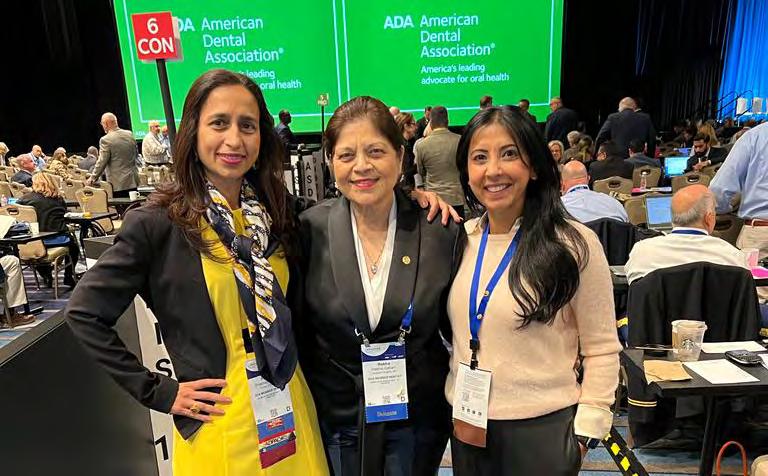




When a jaw-related problem cannot be resolved through orthodontia alone, the patient should be referred to an oral and maxillofacial surgeon (OMS). OMSs are uniquely qualified and trained to determine the appropriate procedure for each case and to work with the orthodontist and restorative dentist to assure a successful outcome. Visit MyOMS.org for more information.

